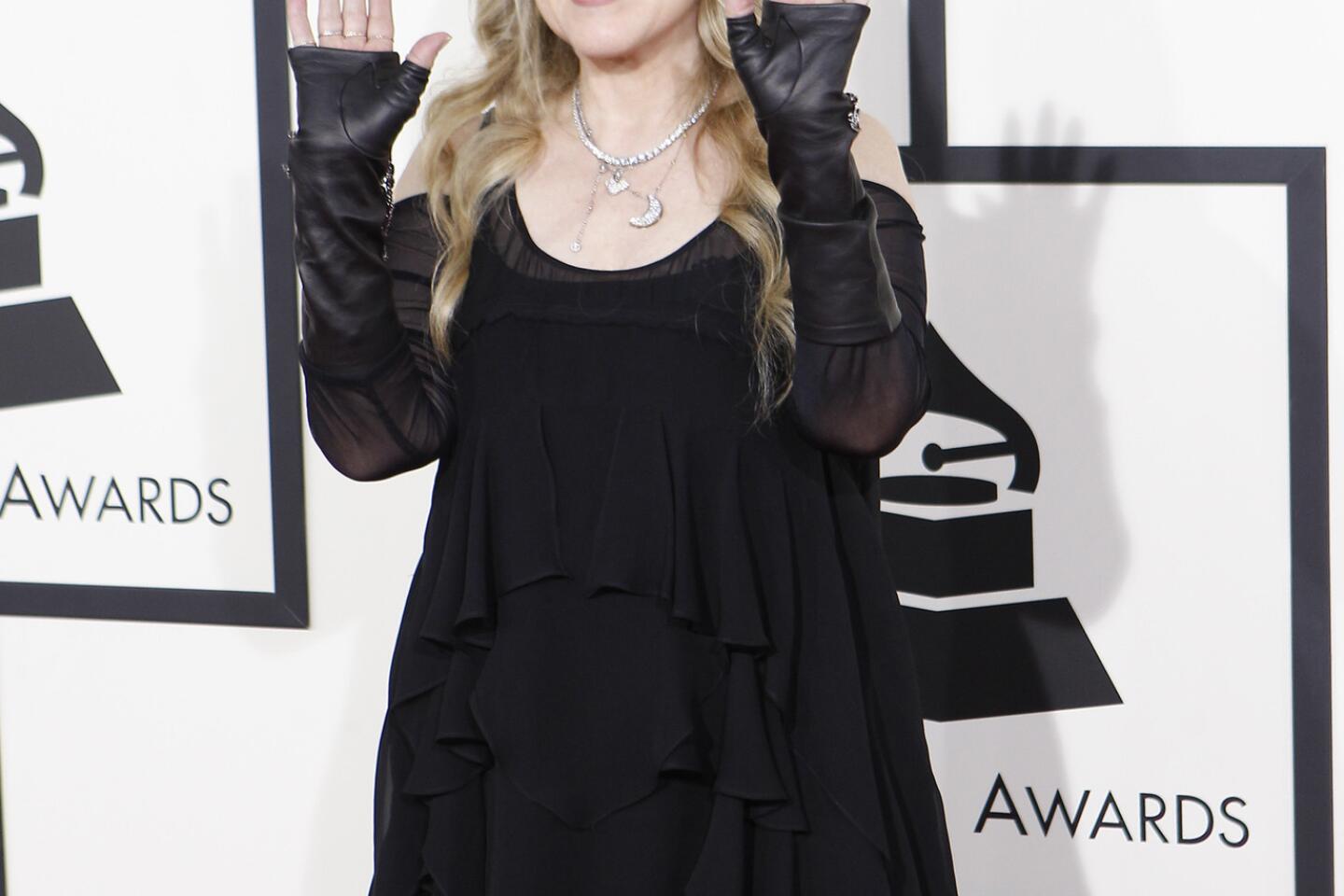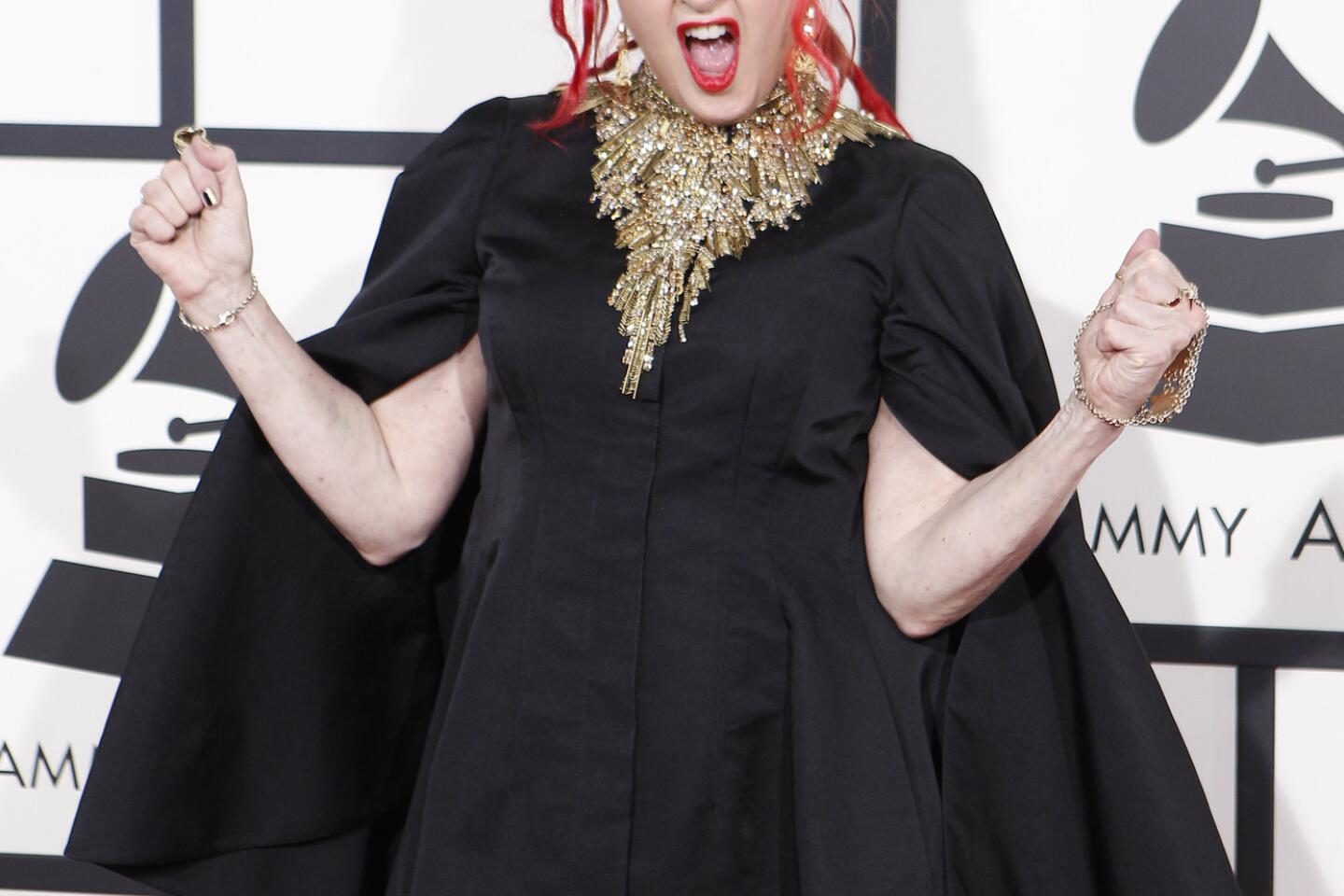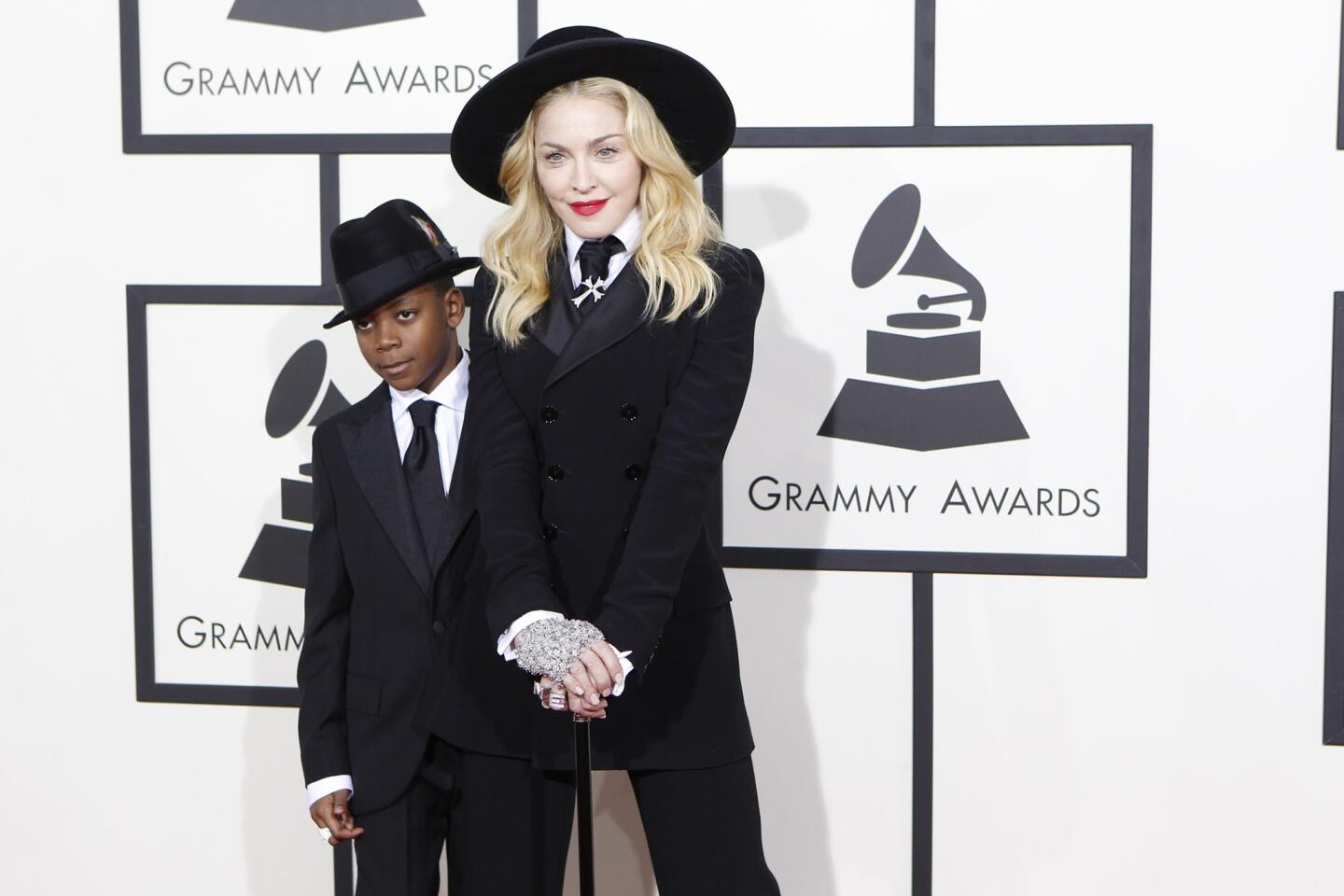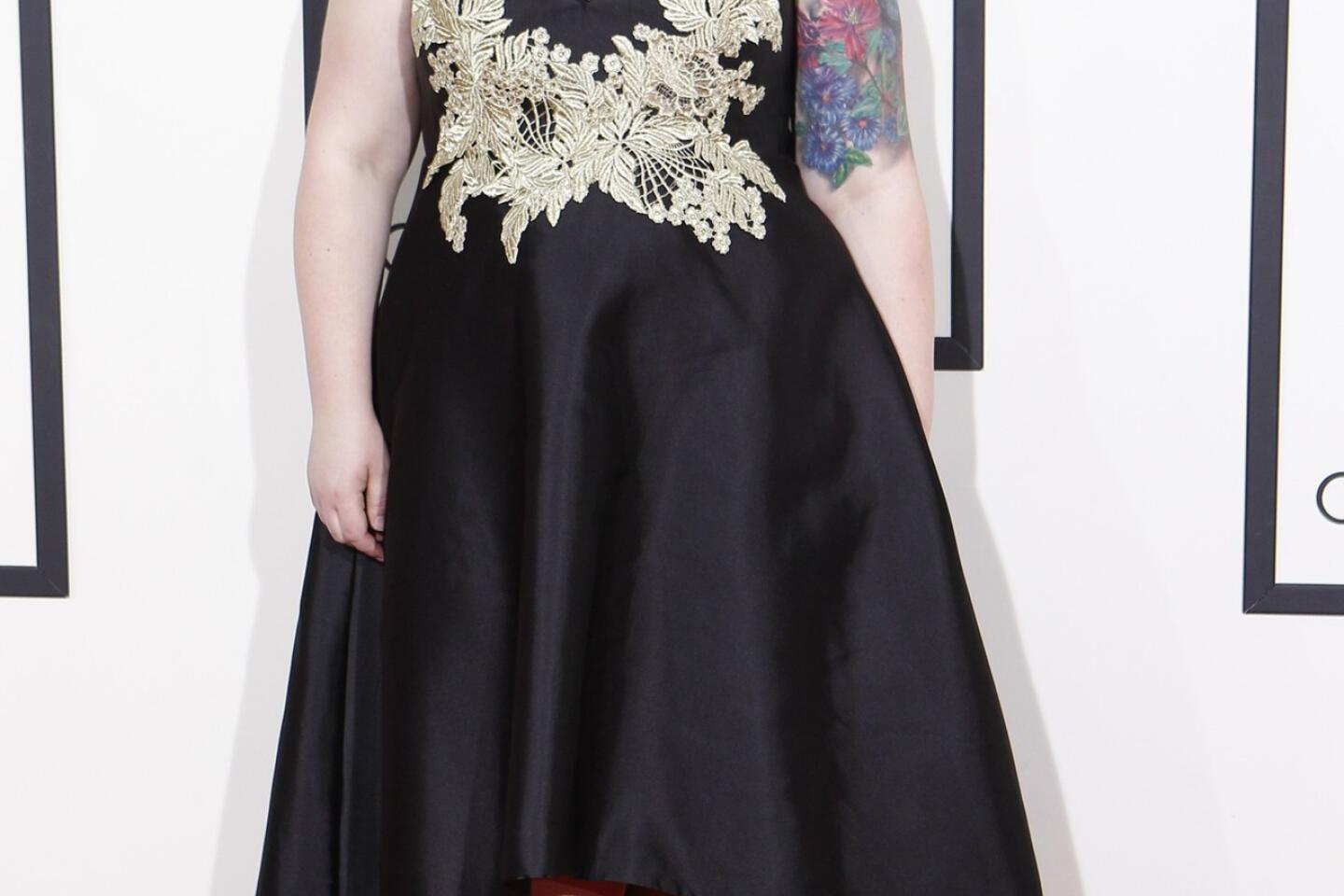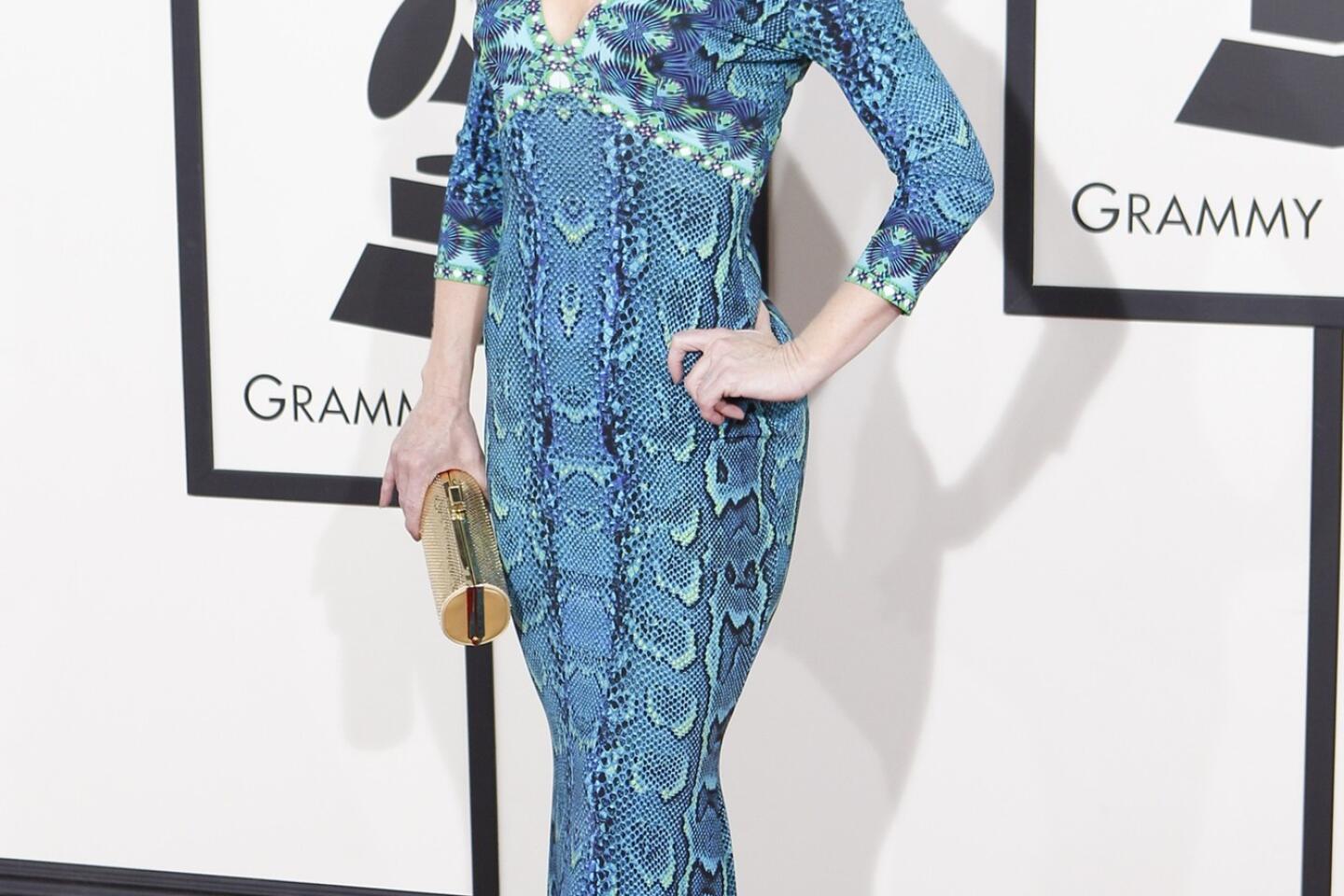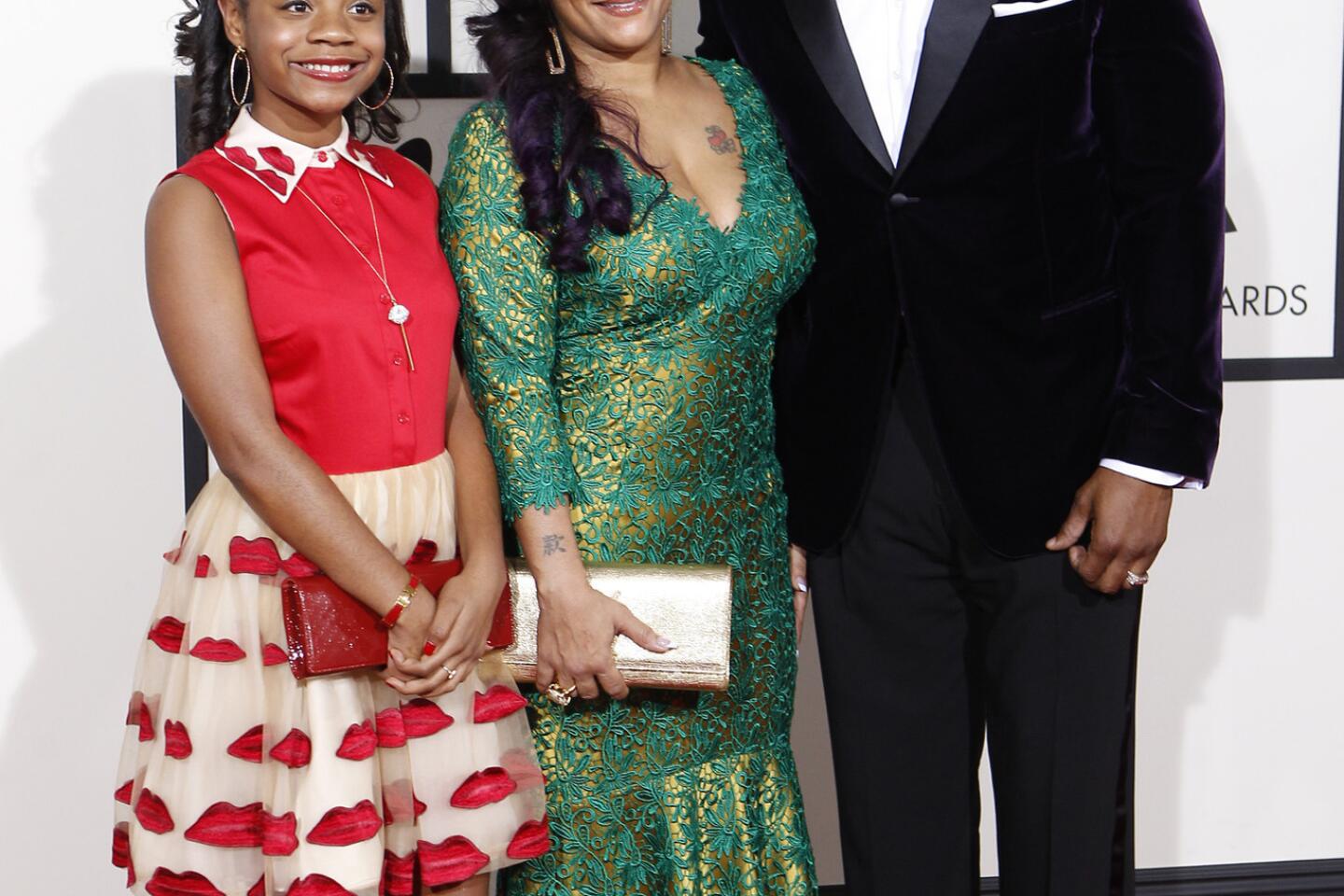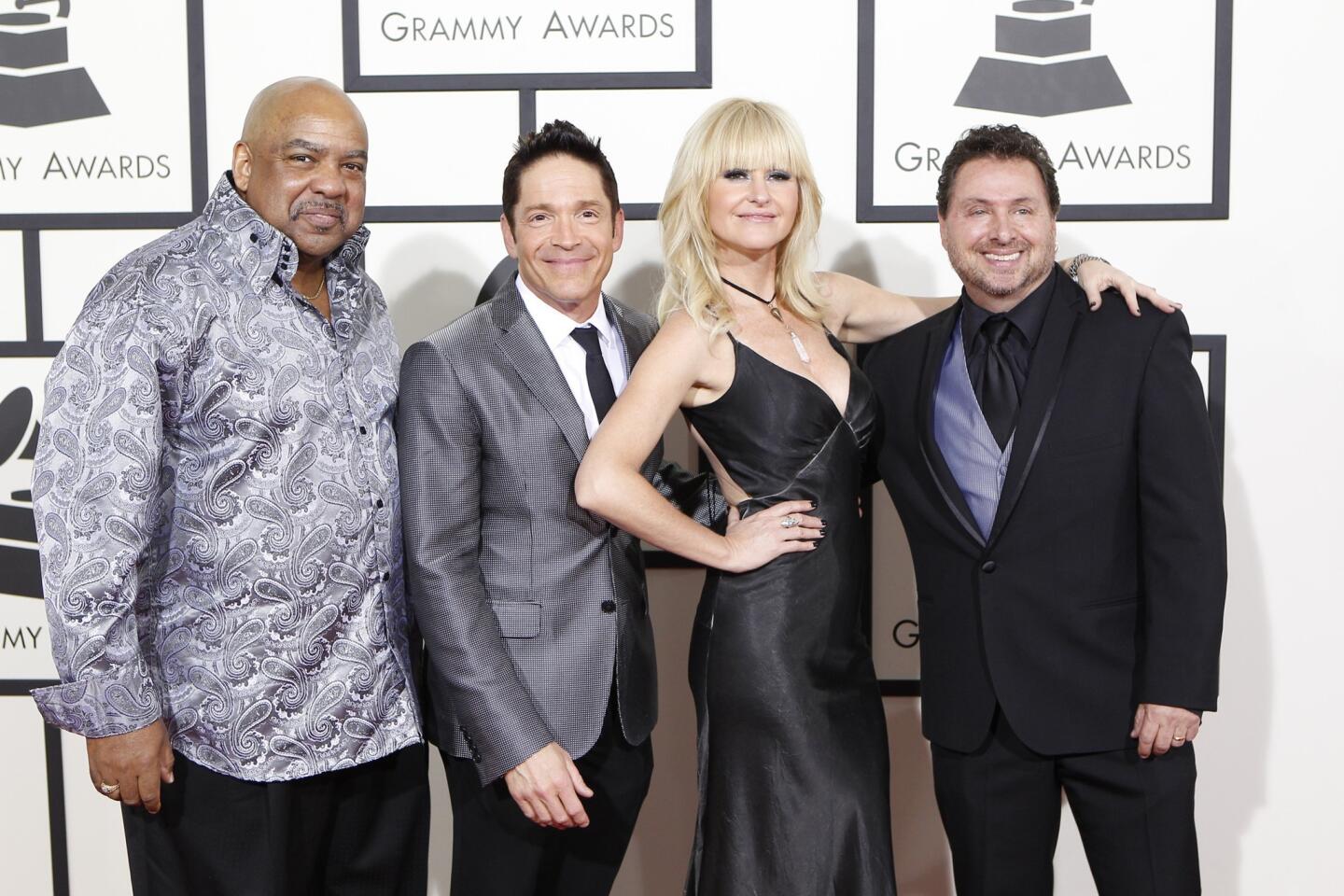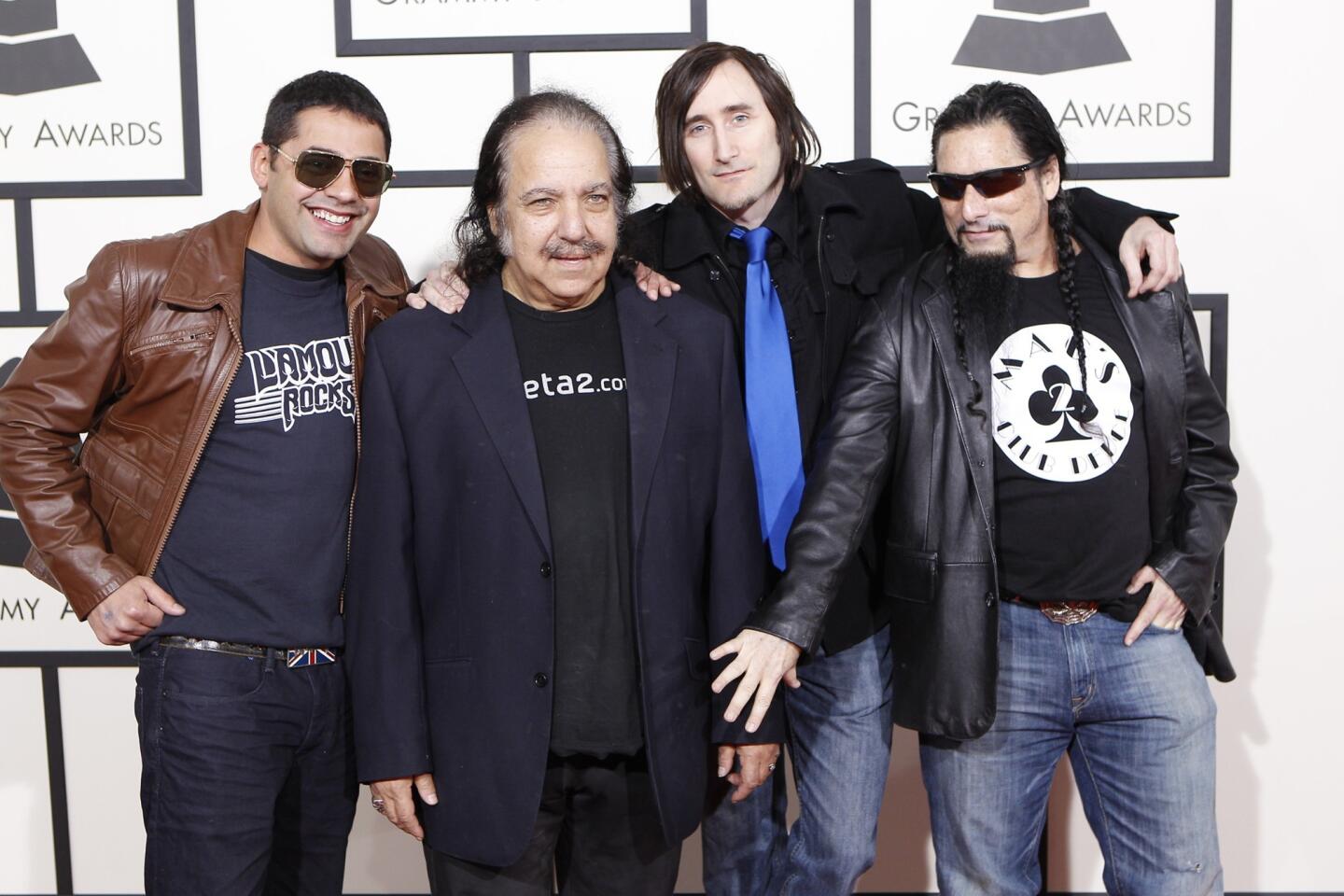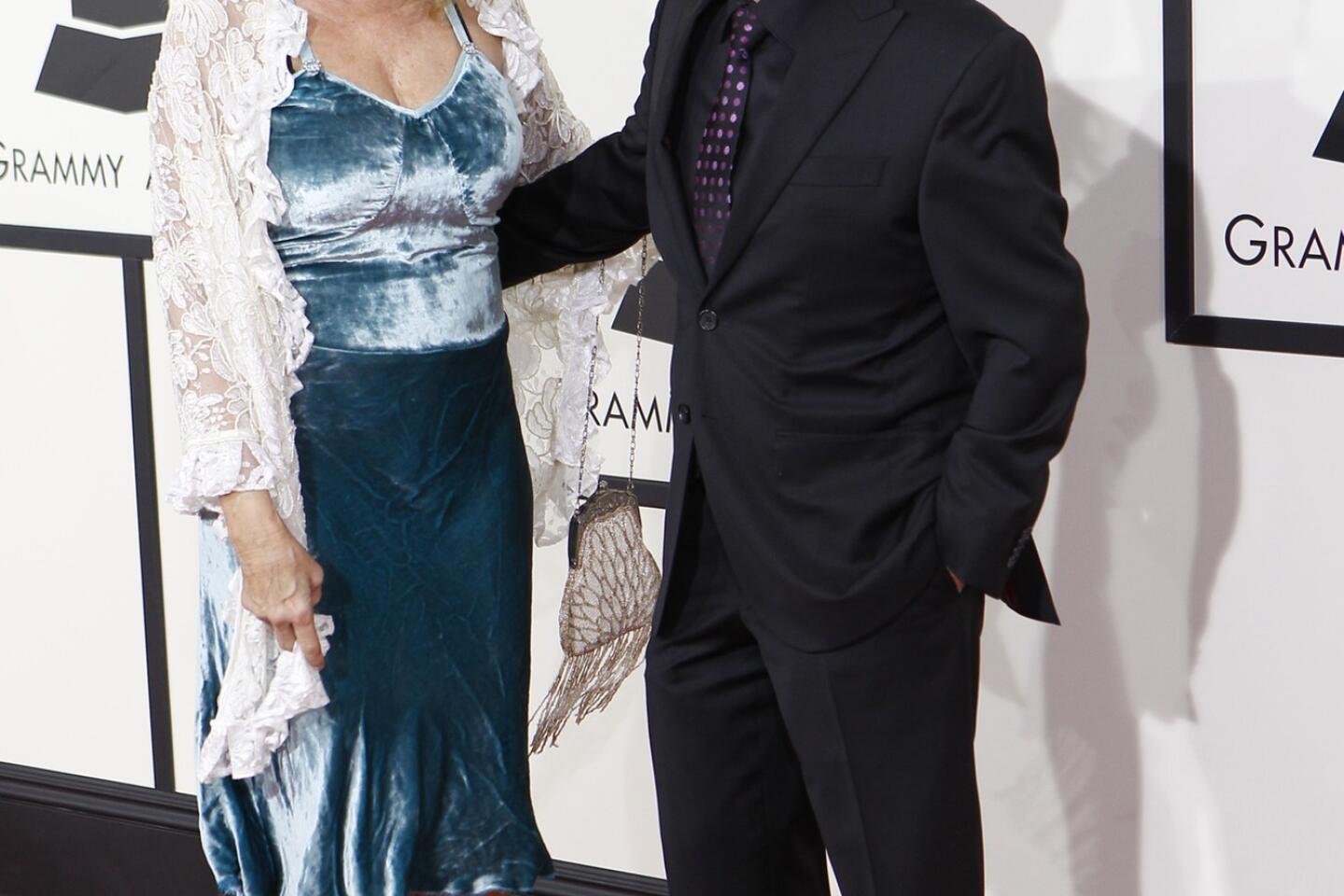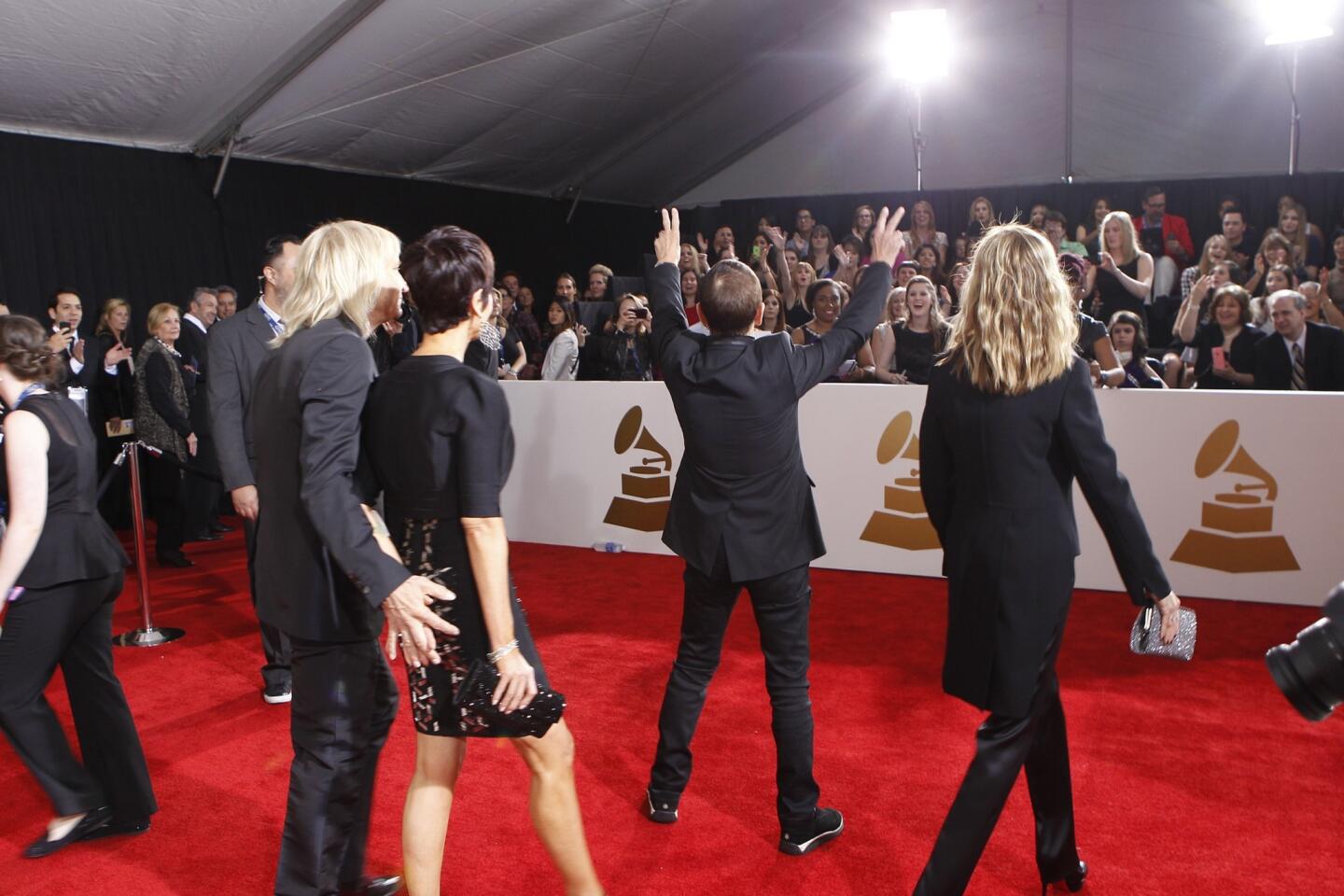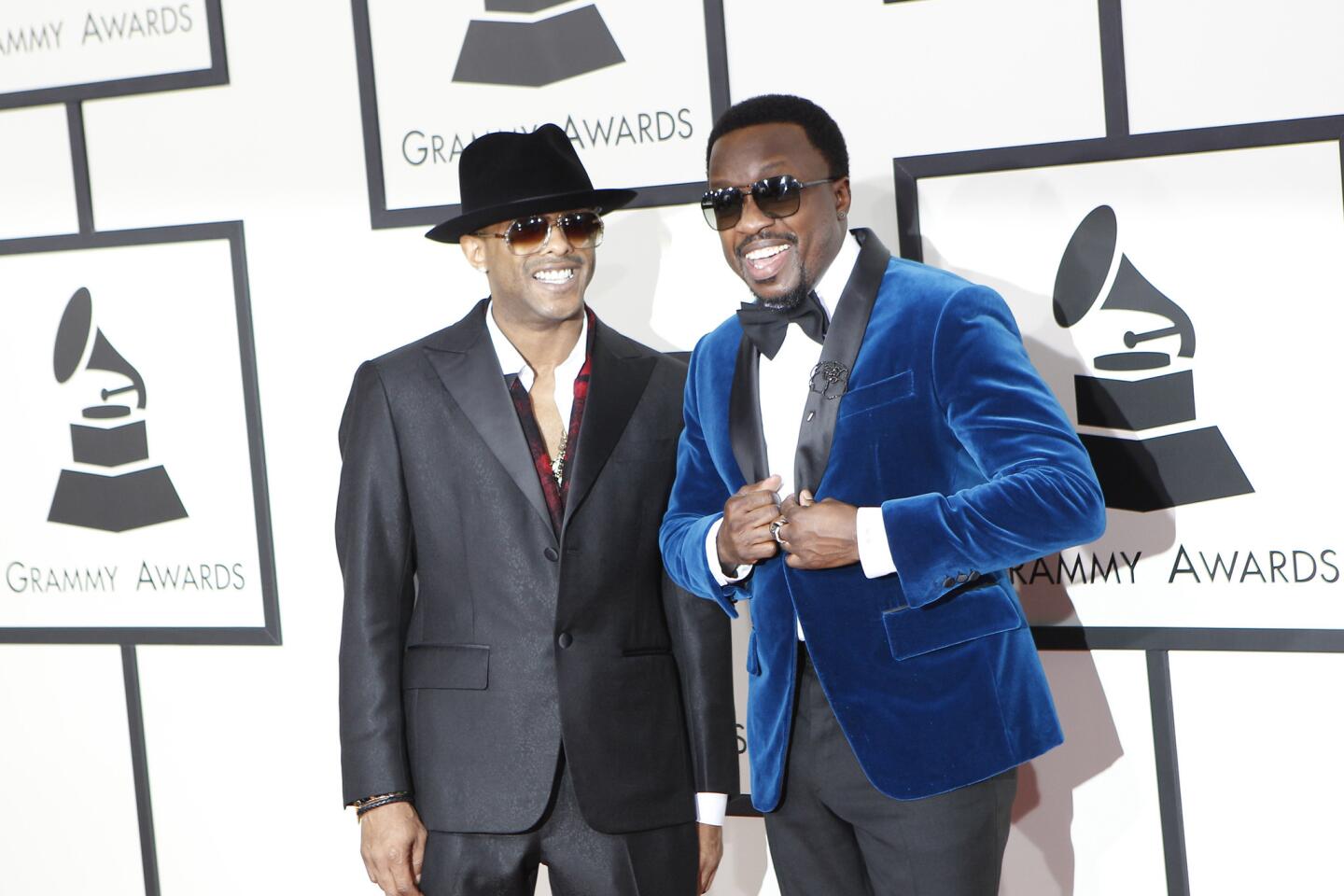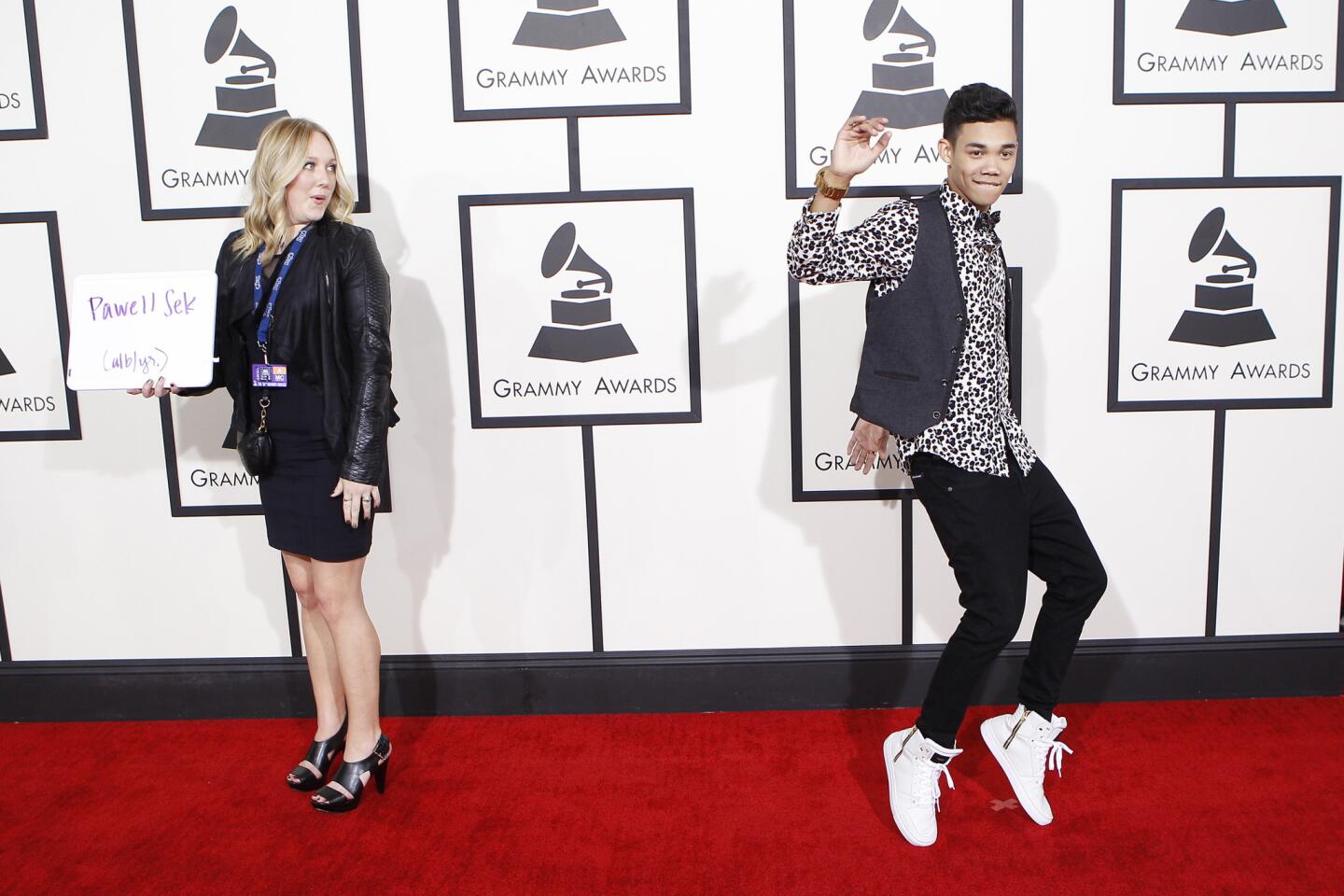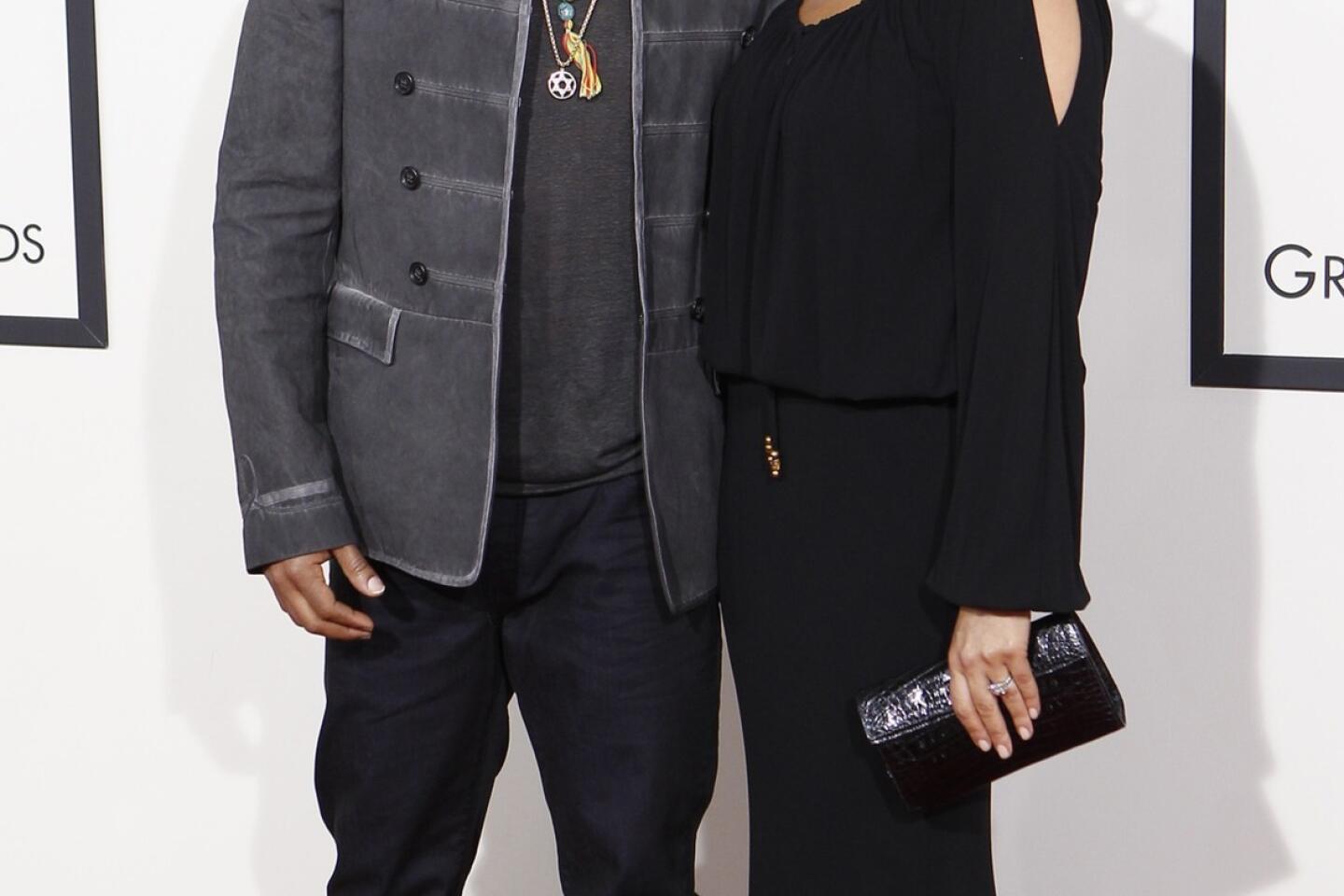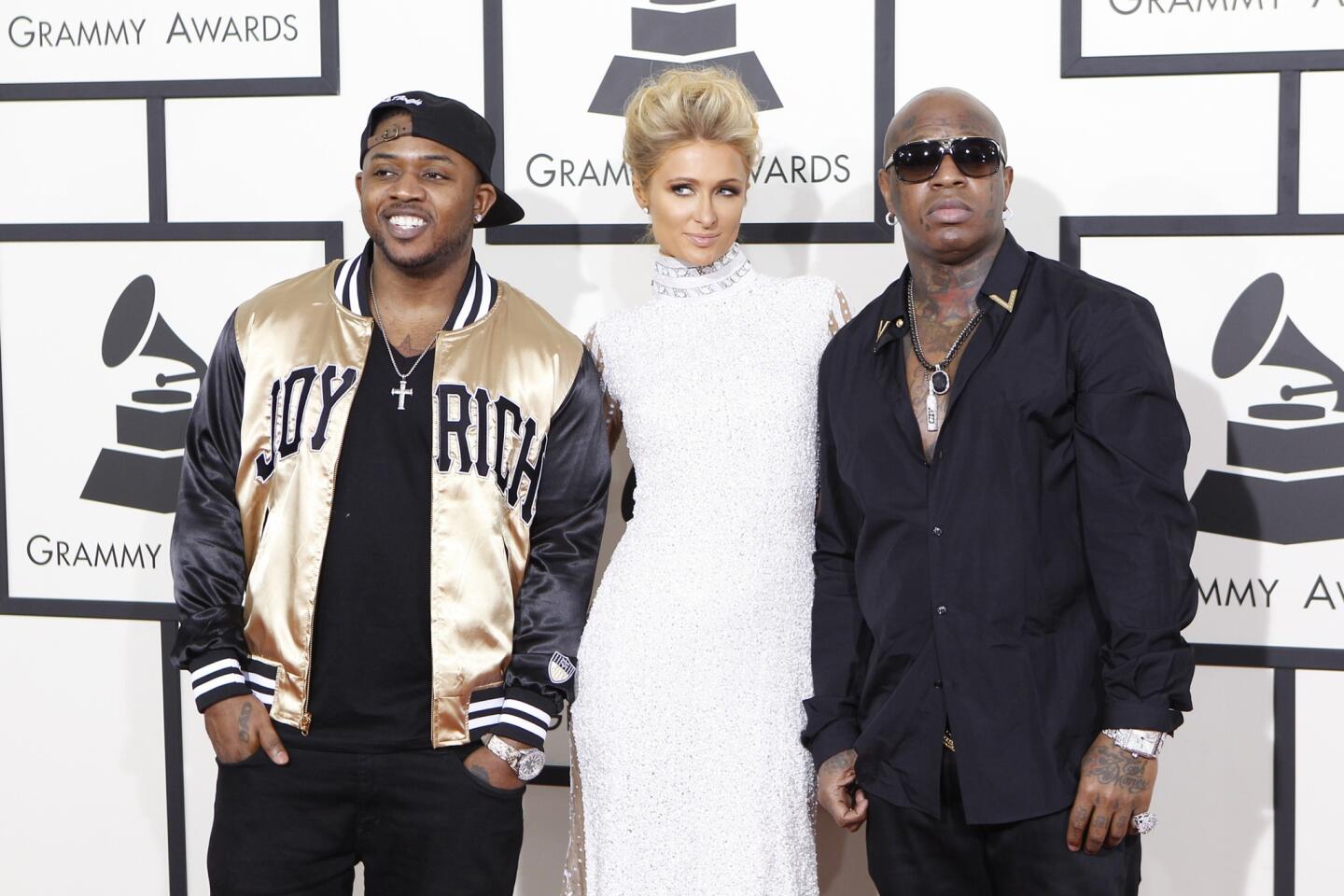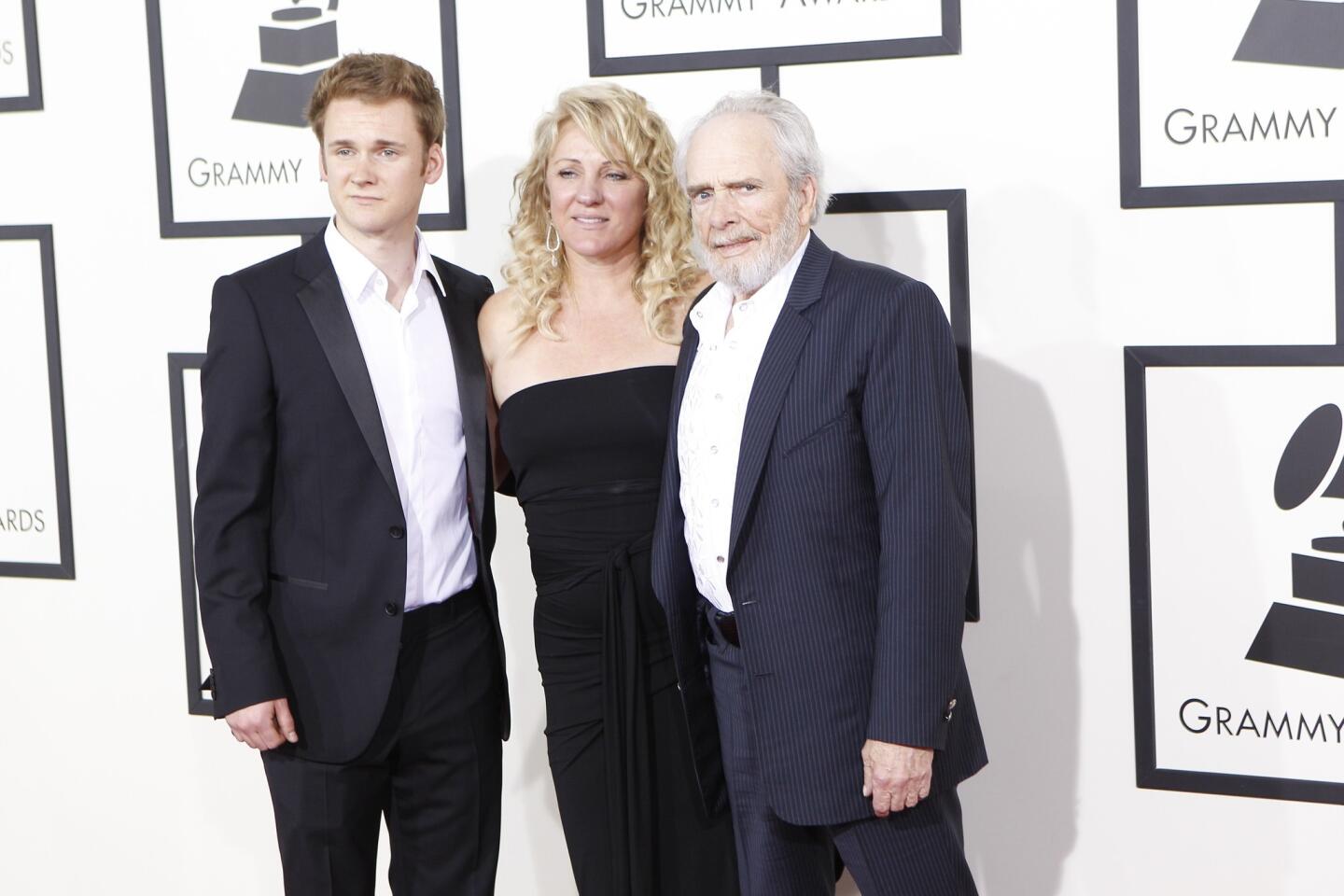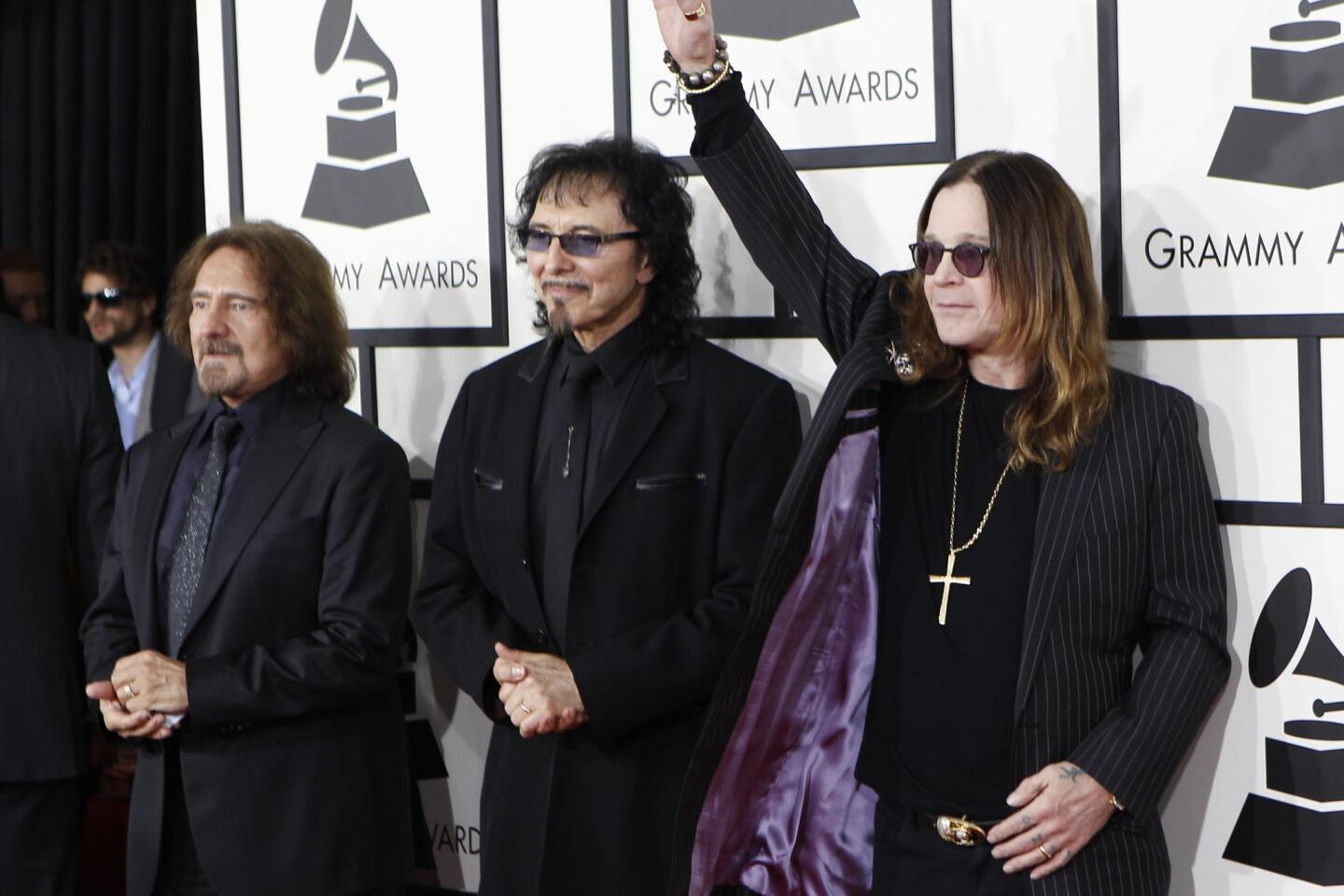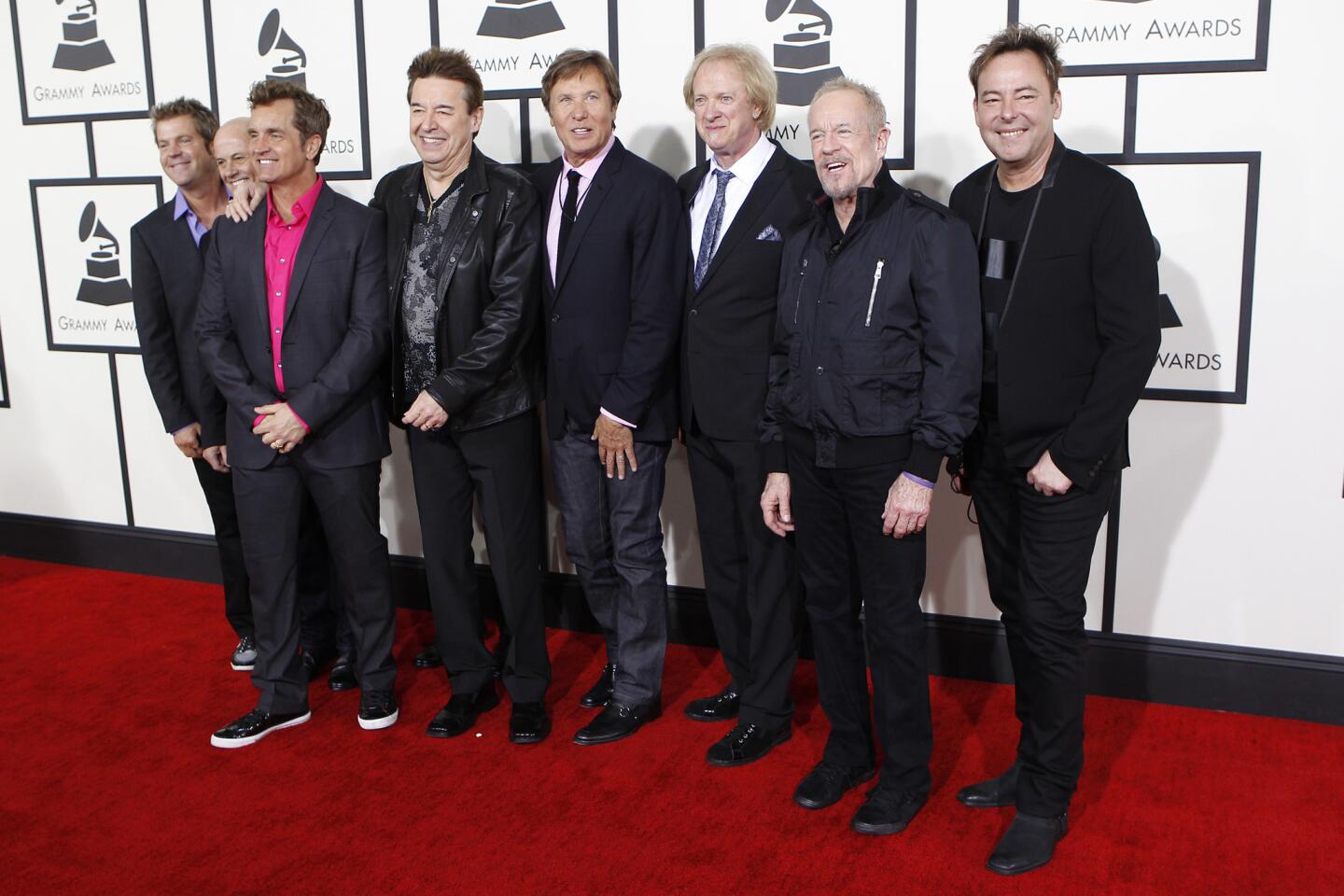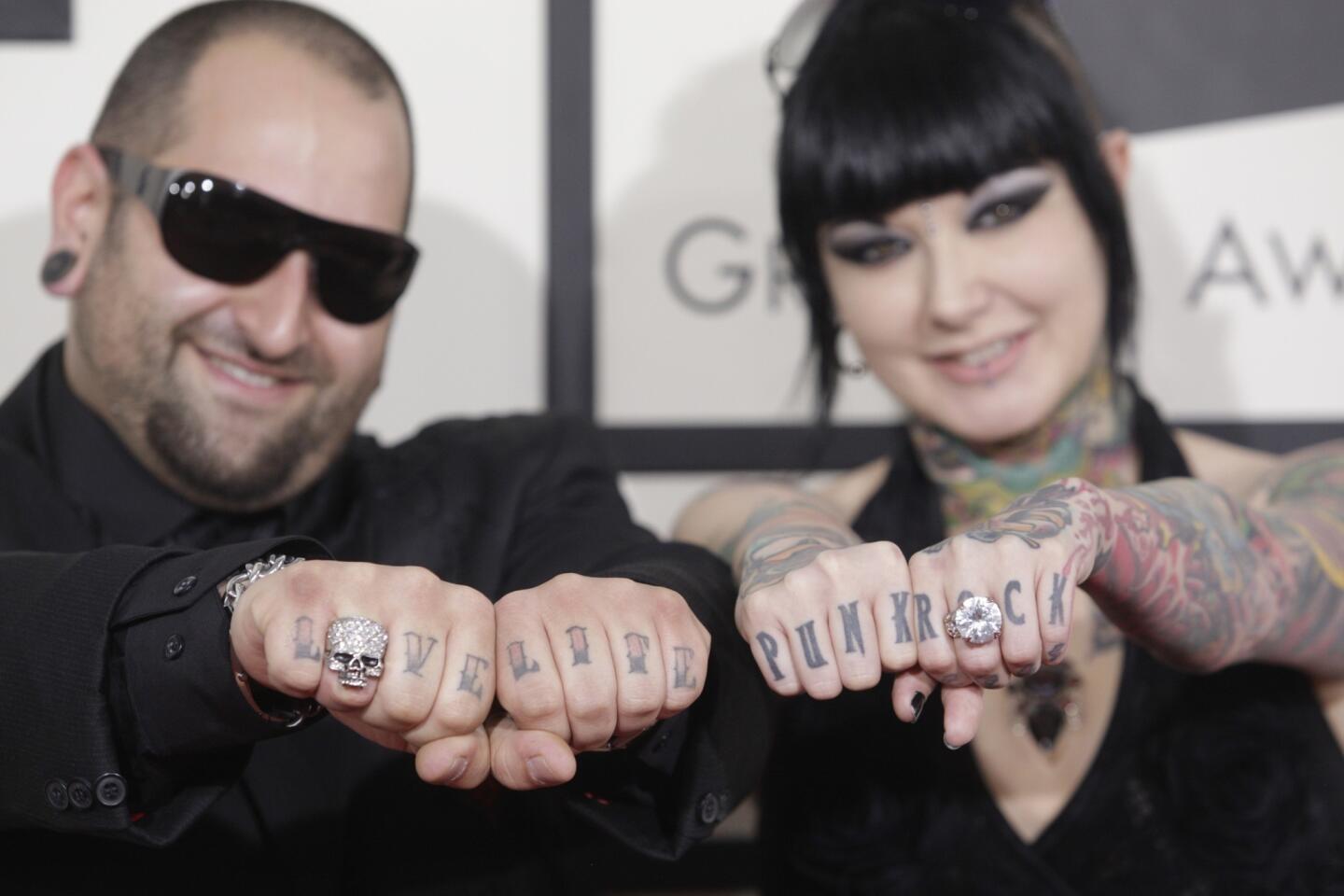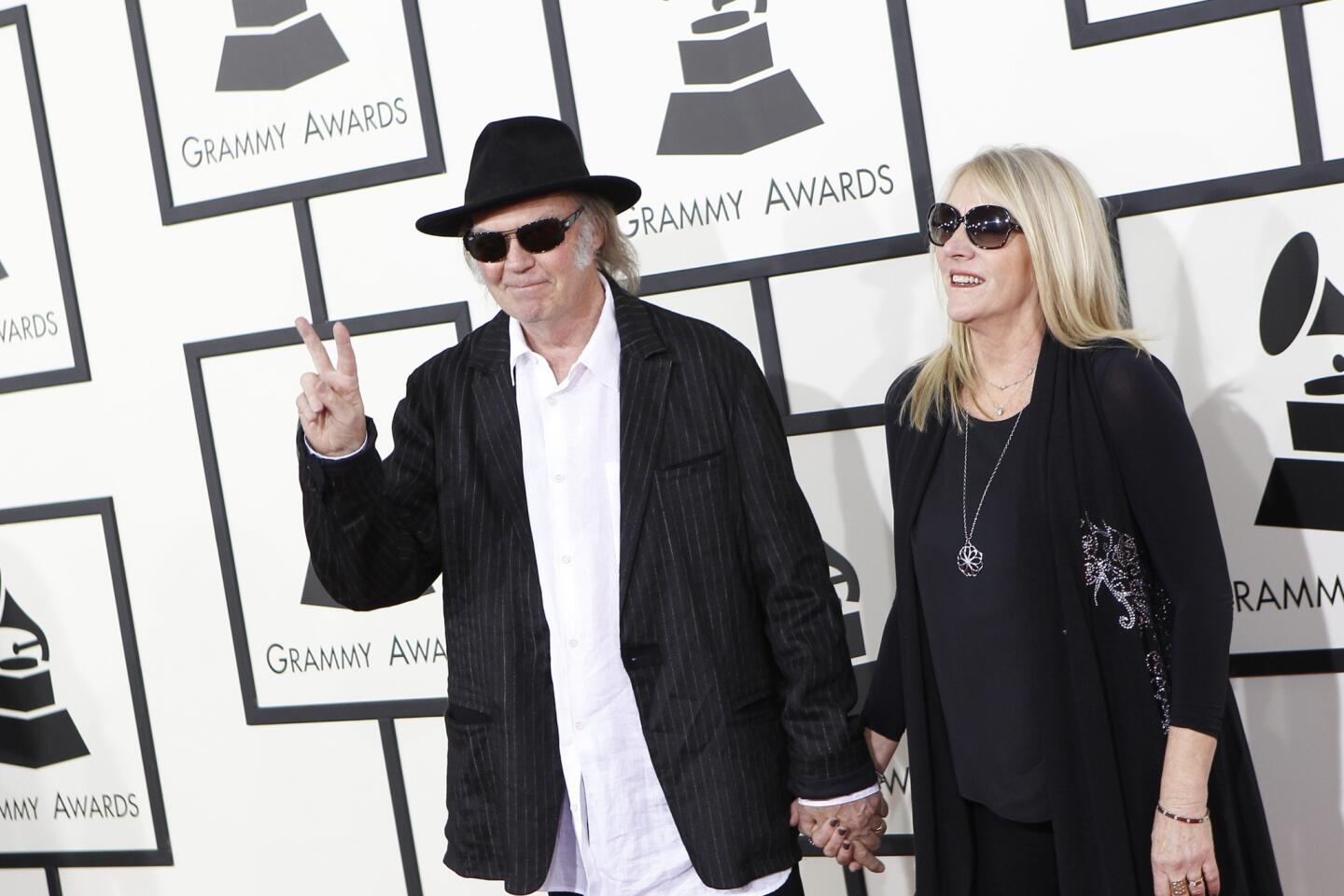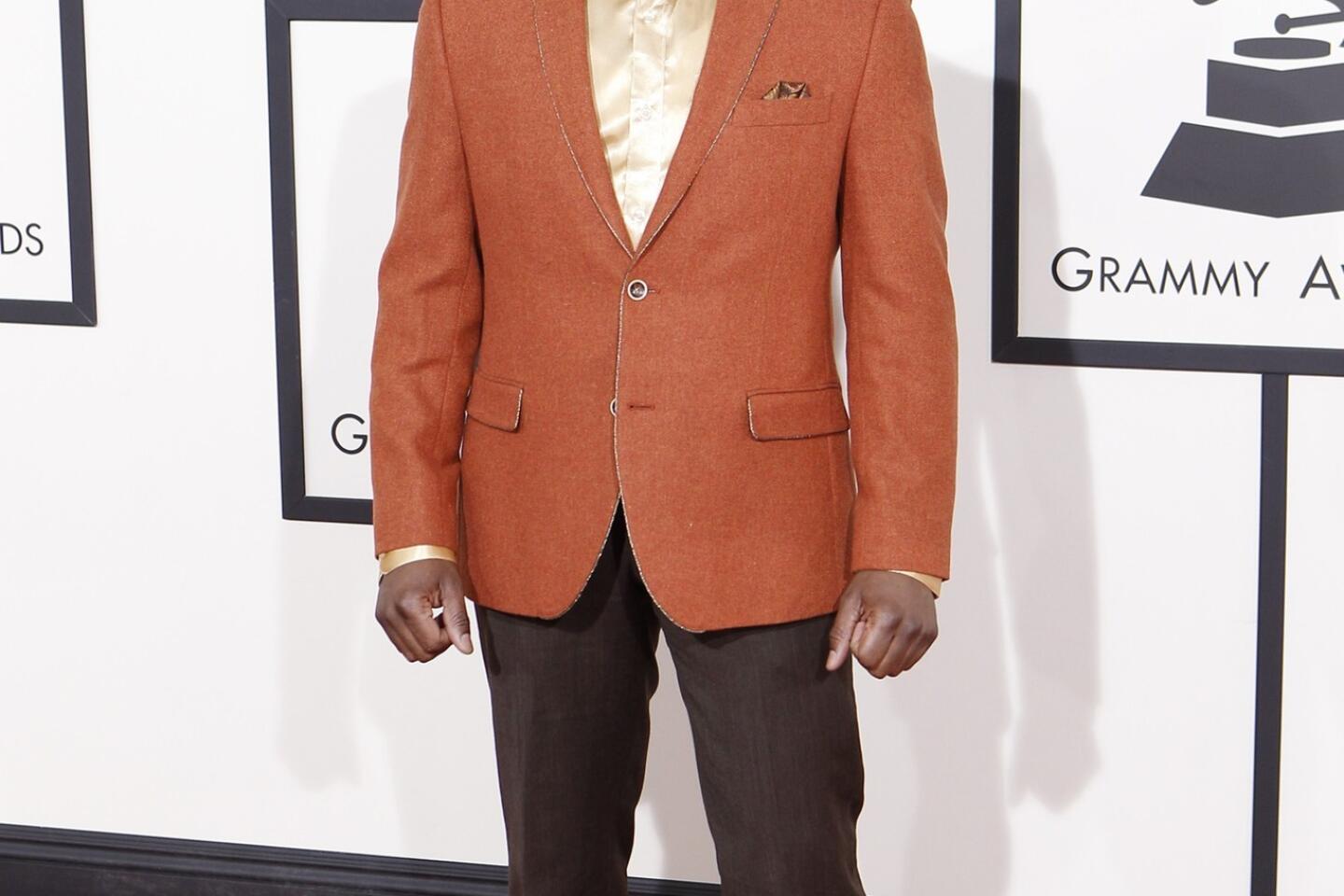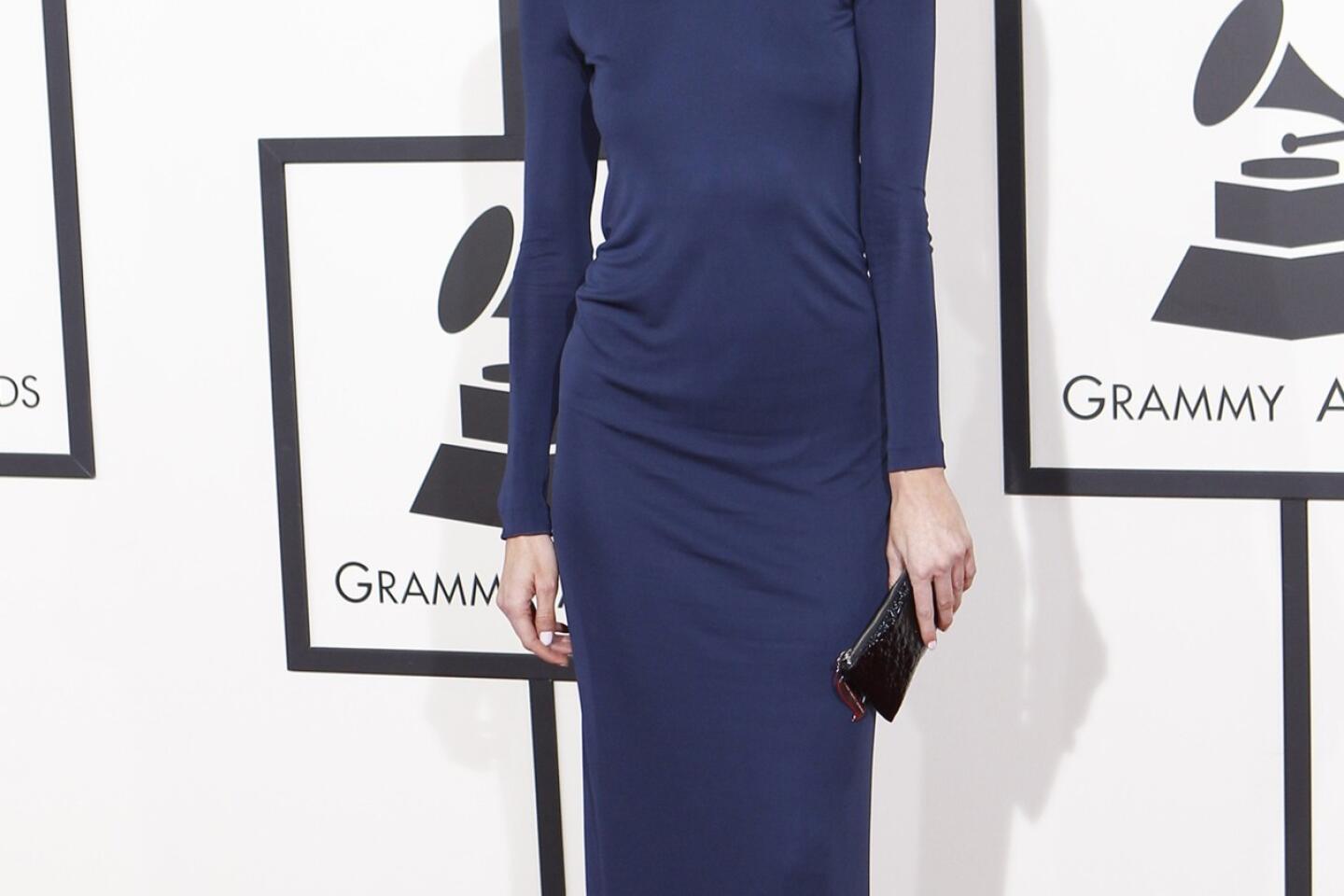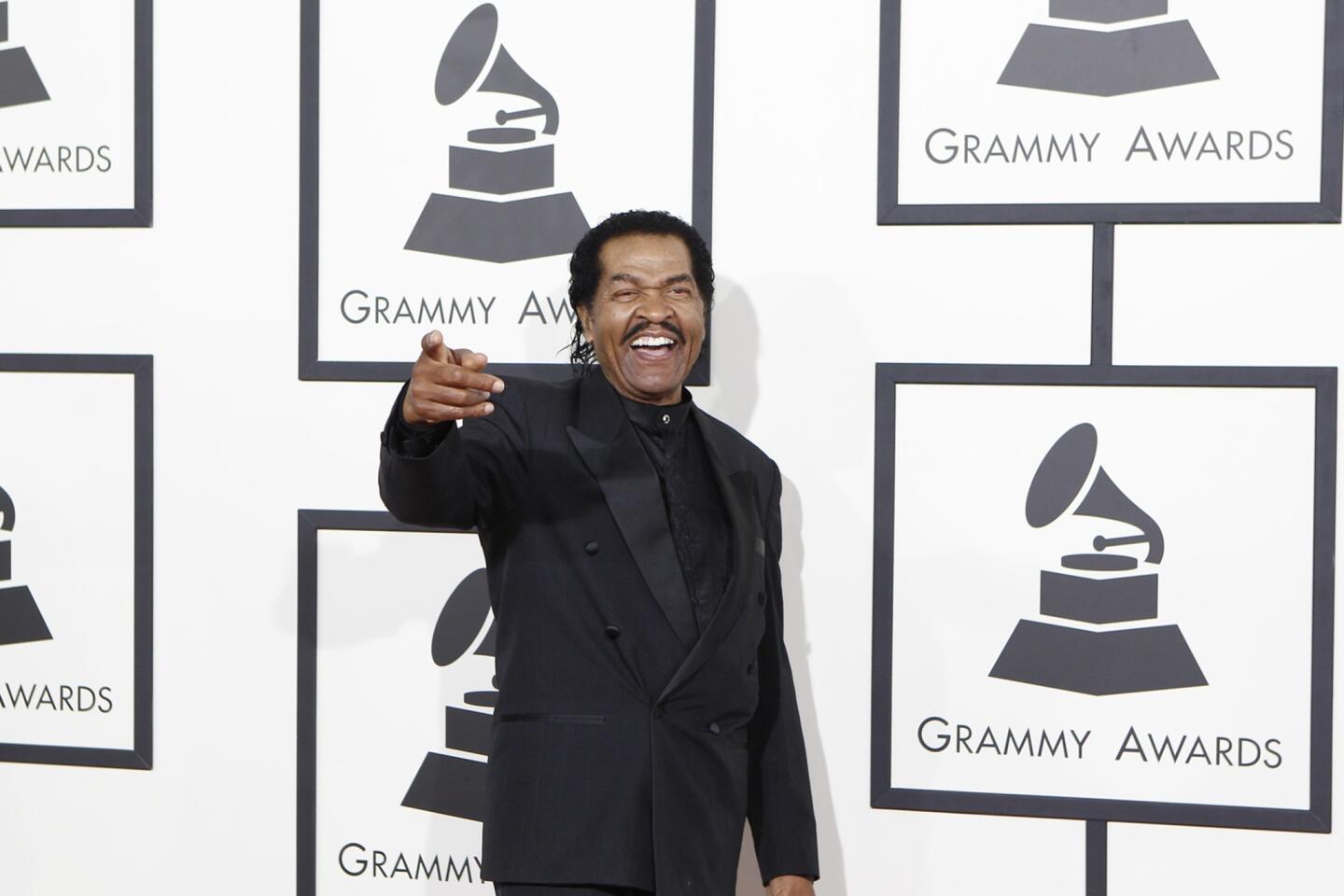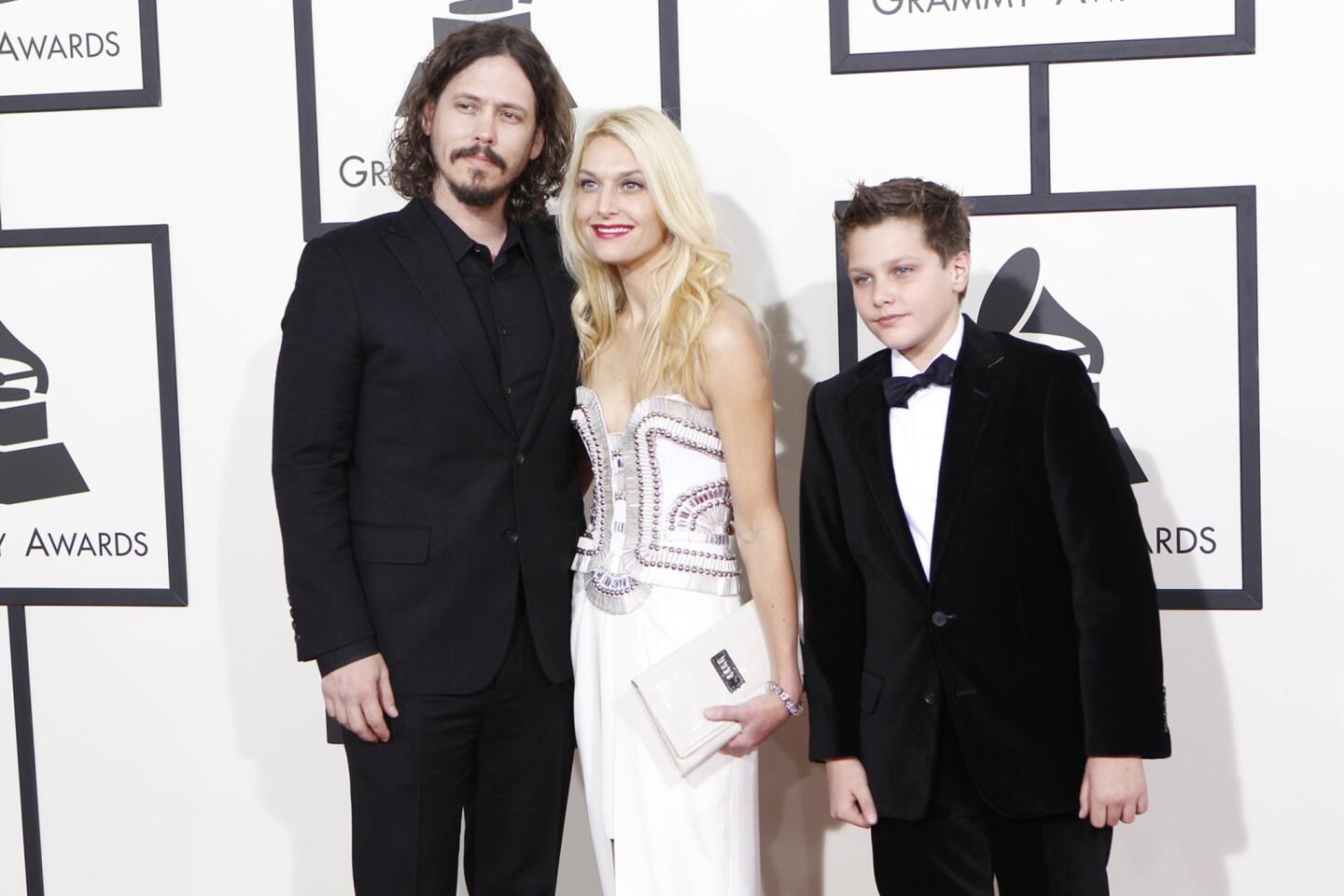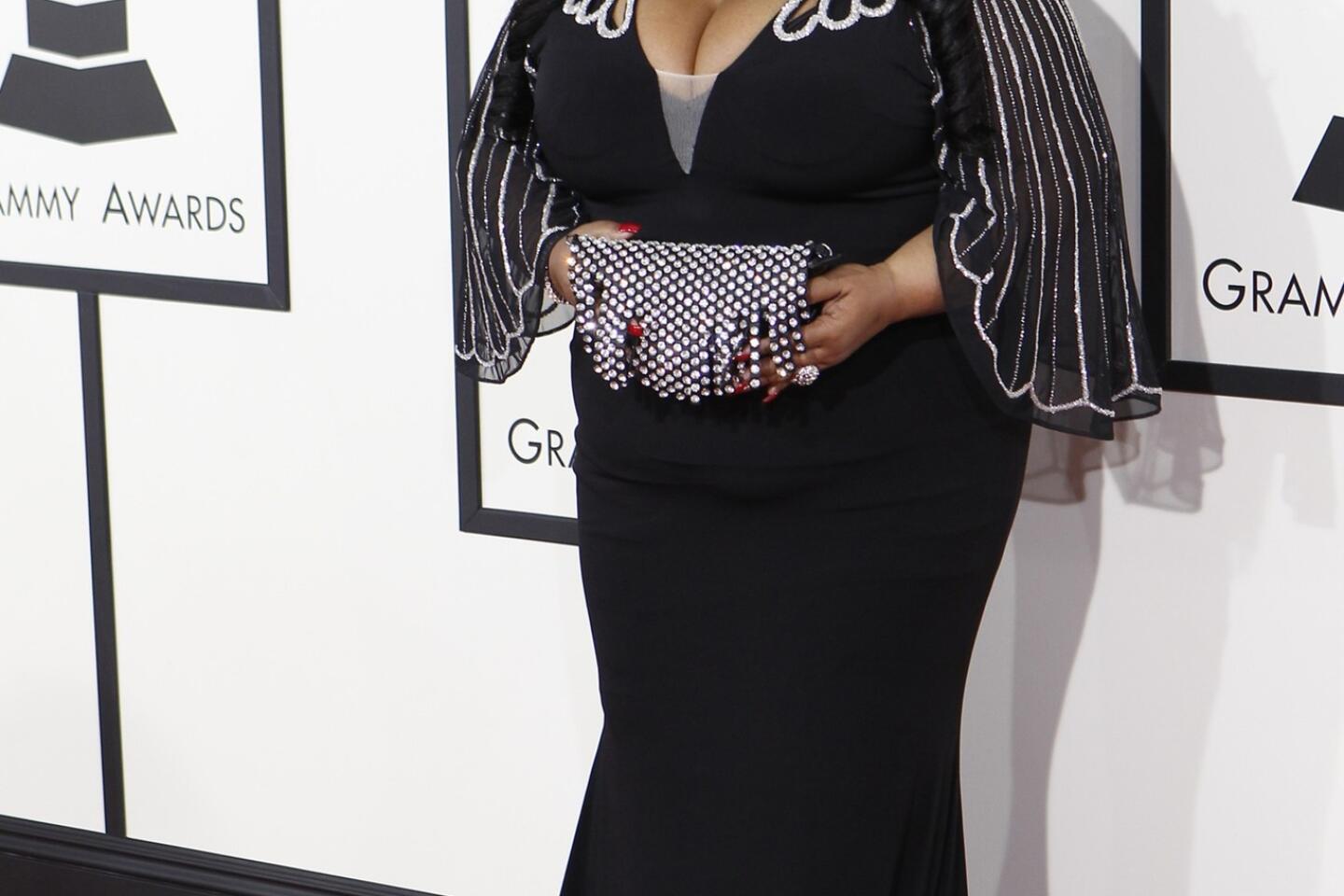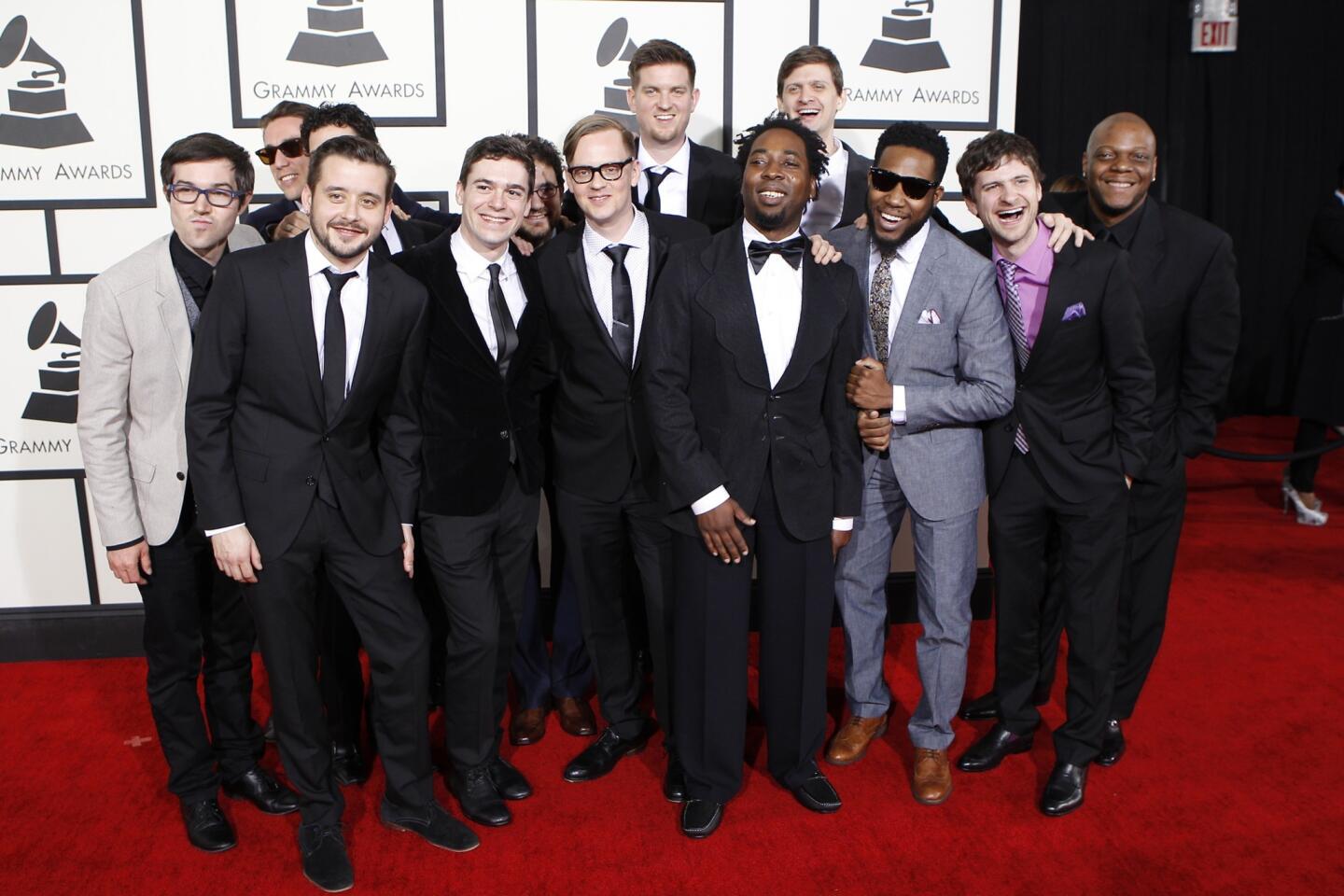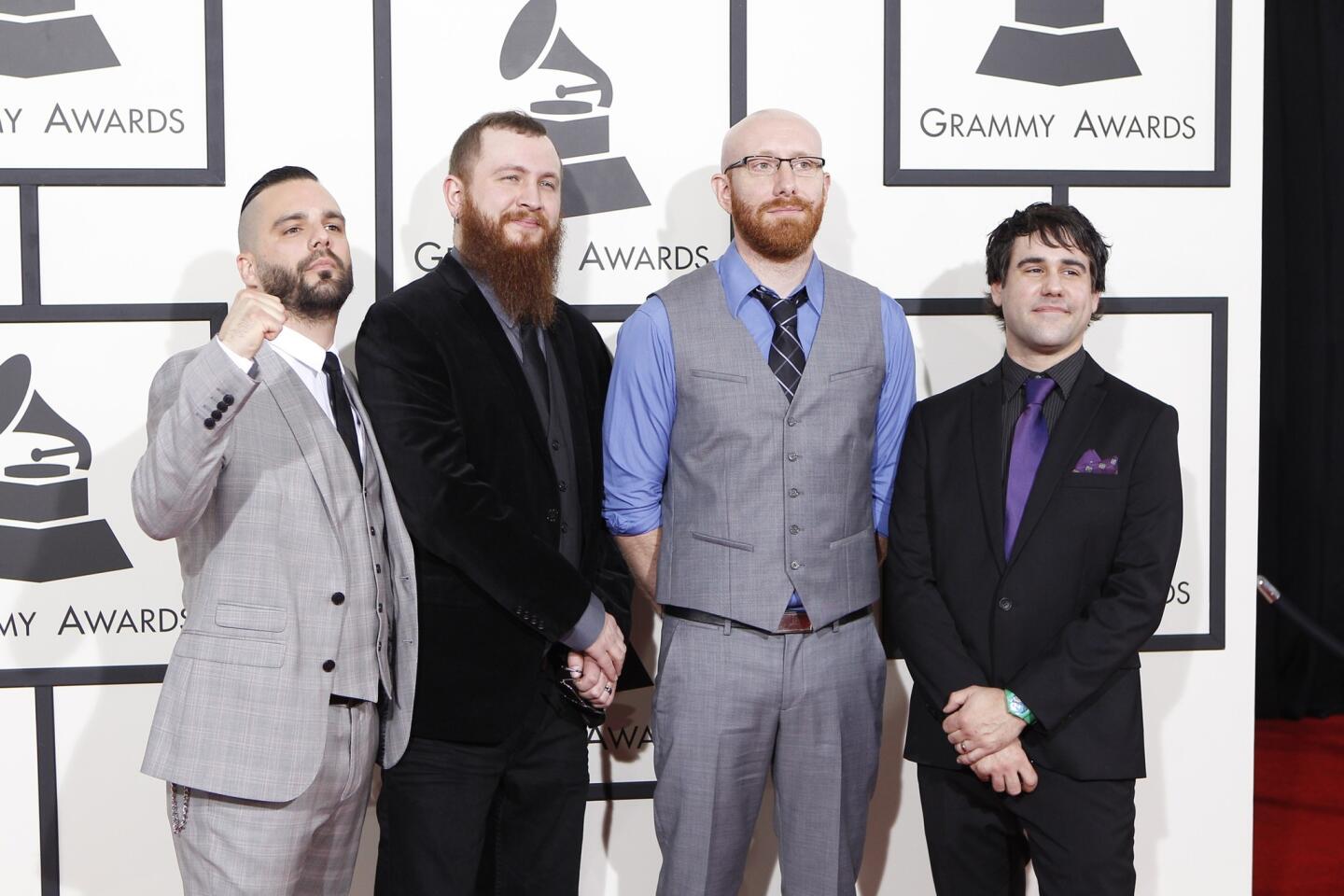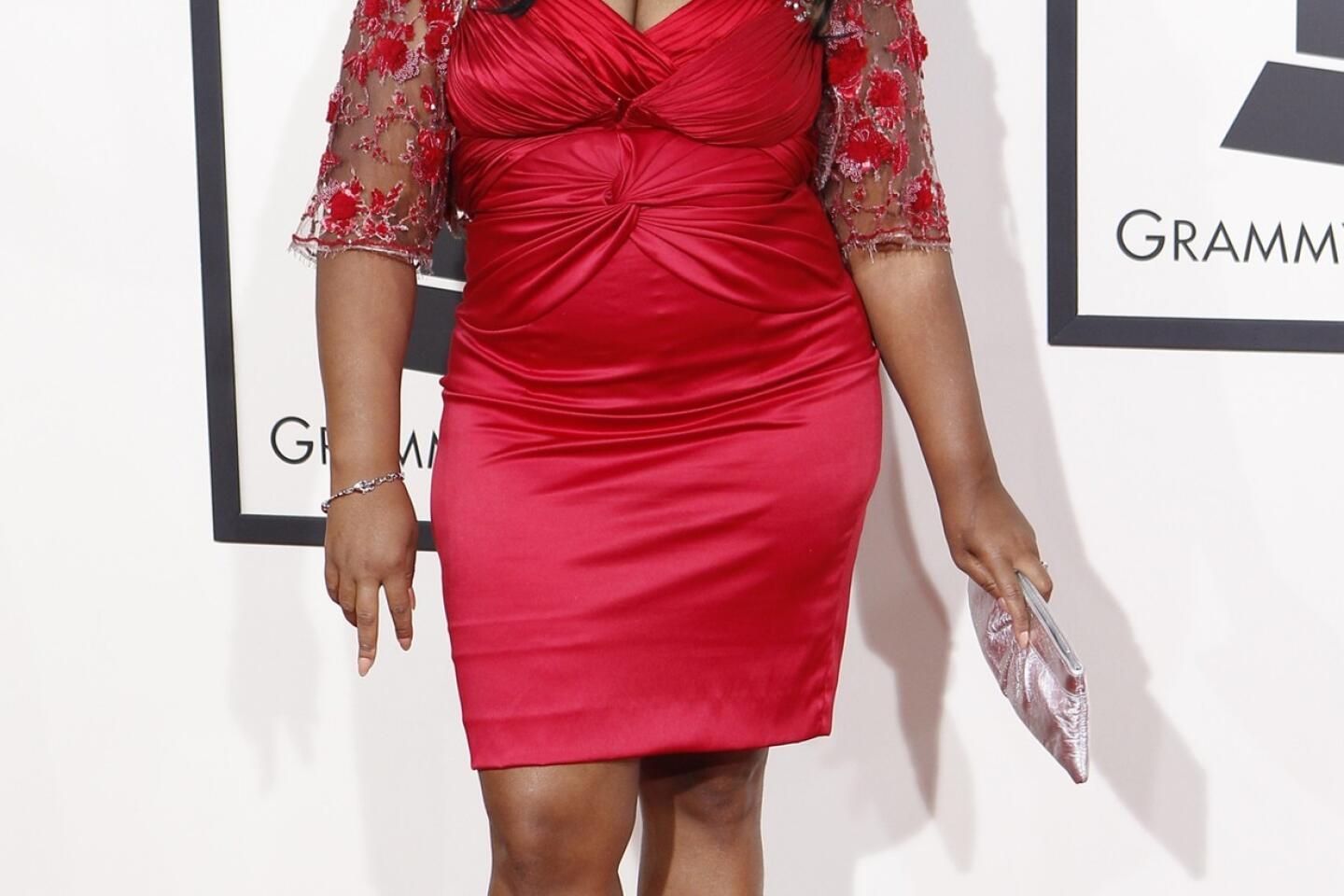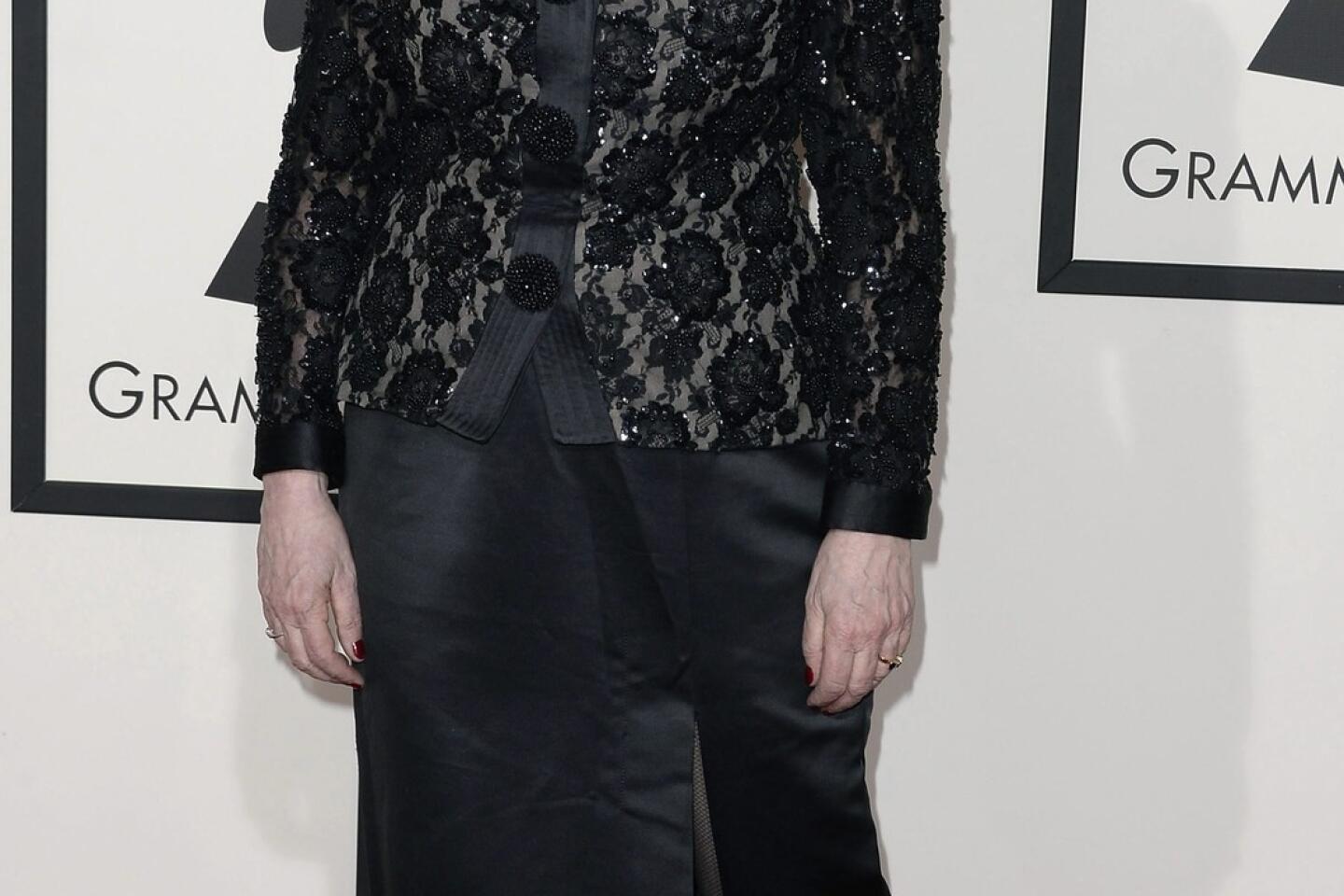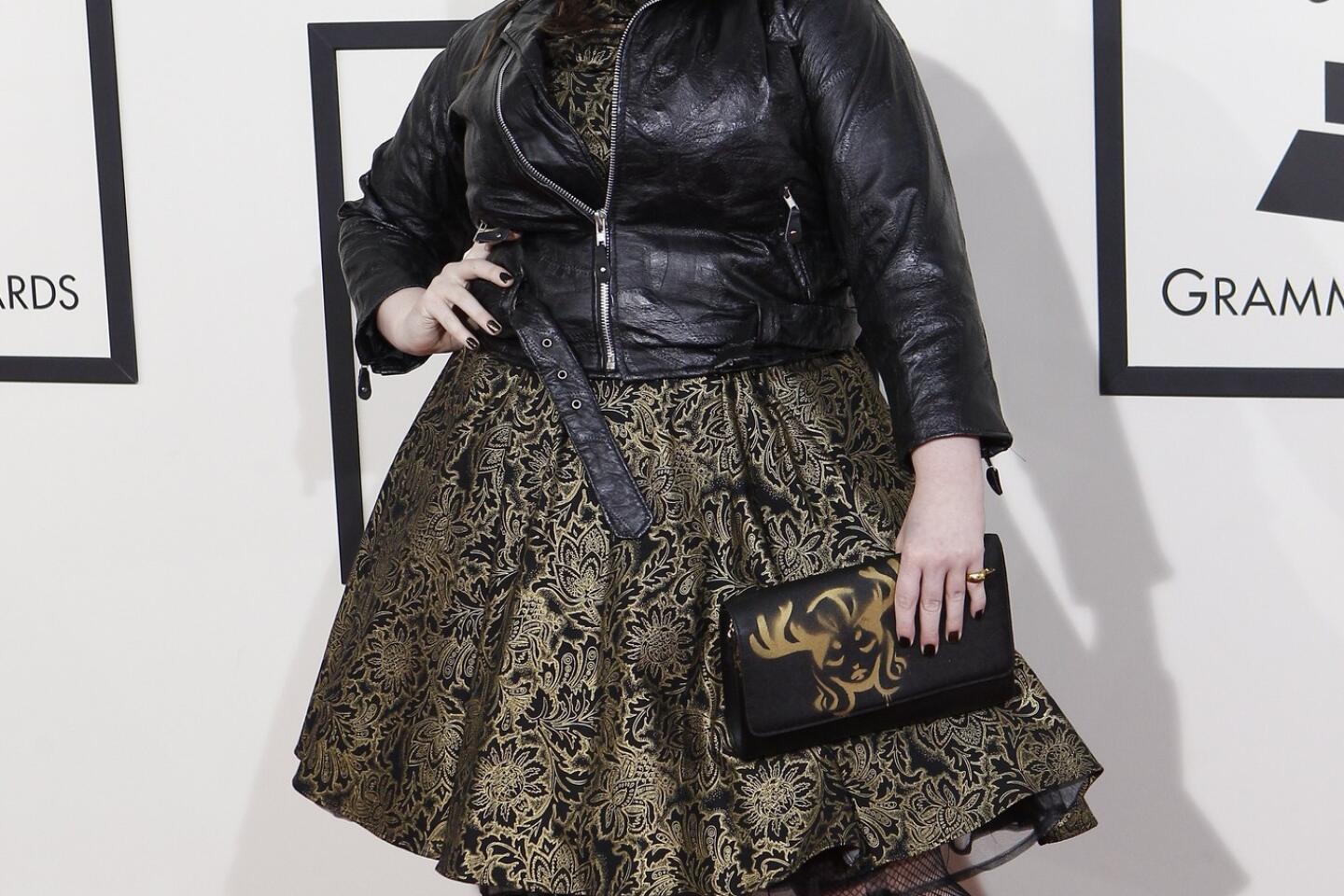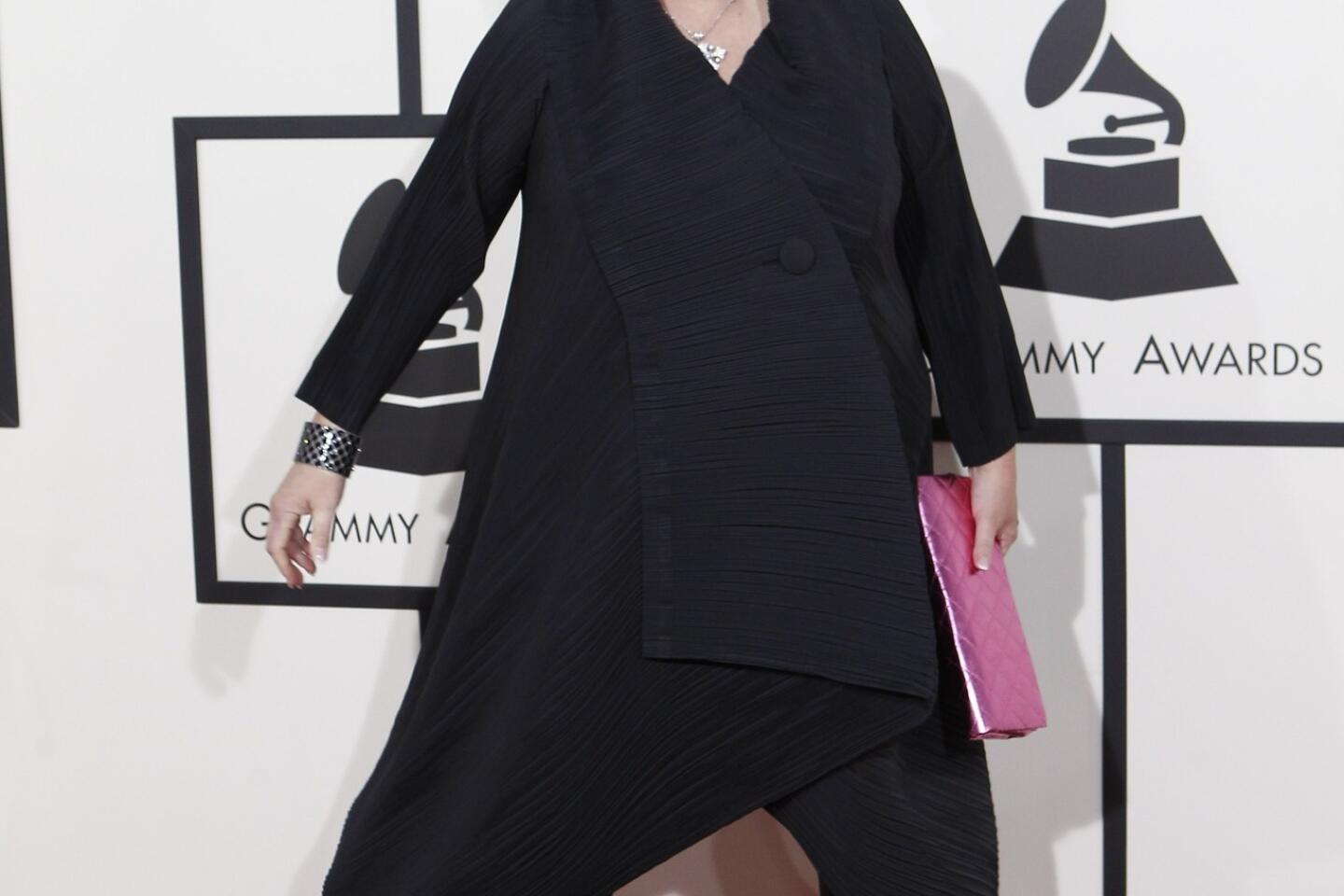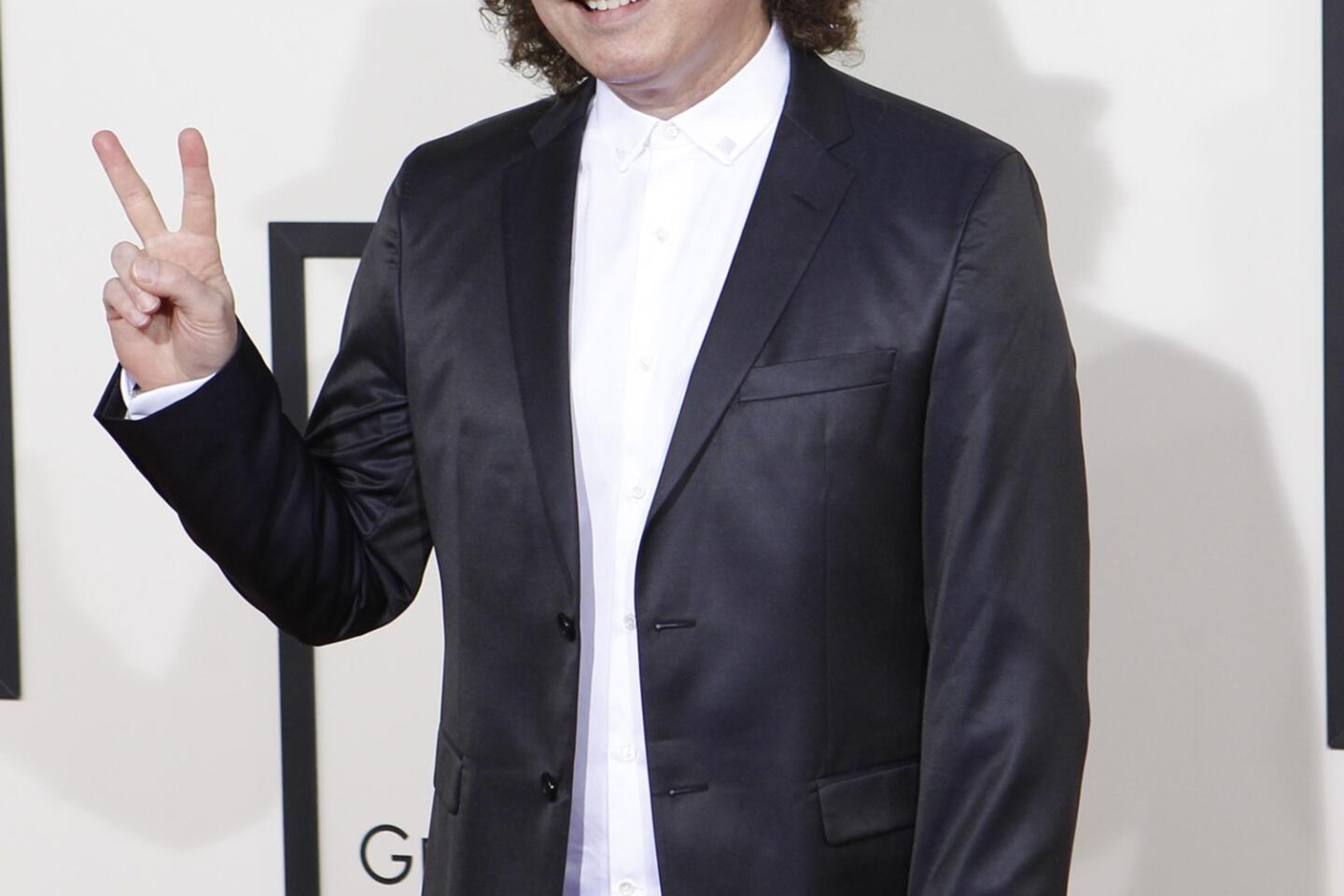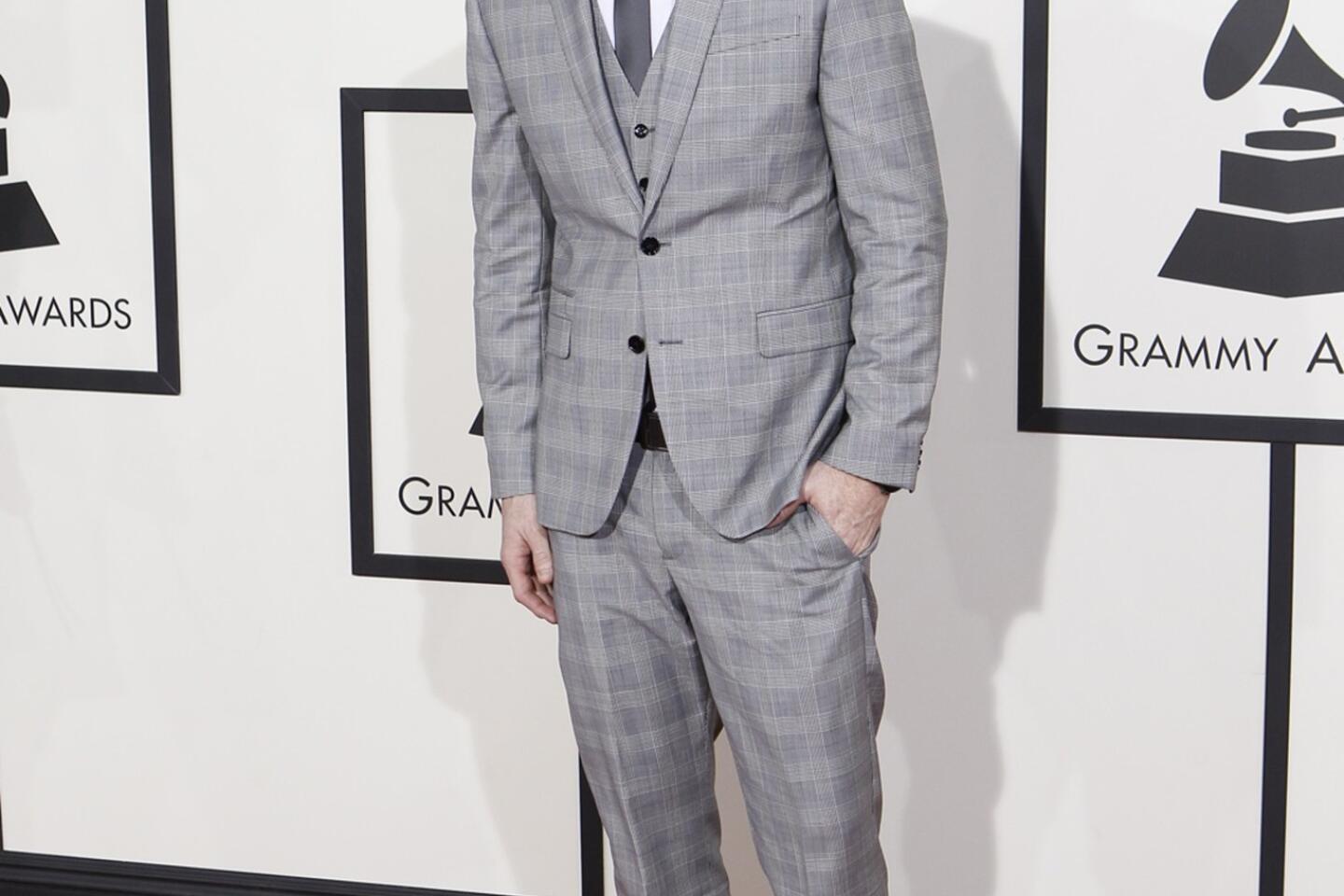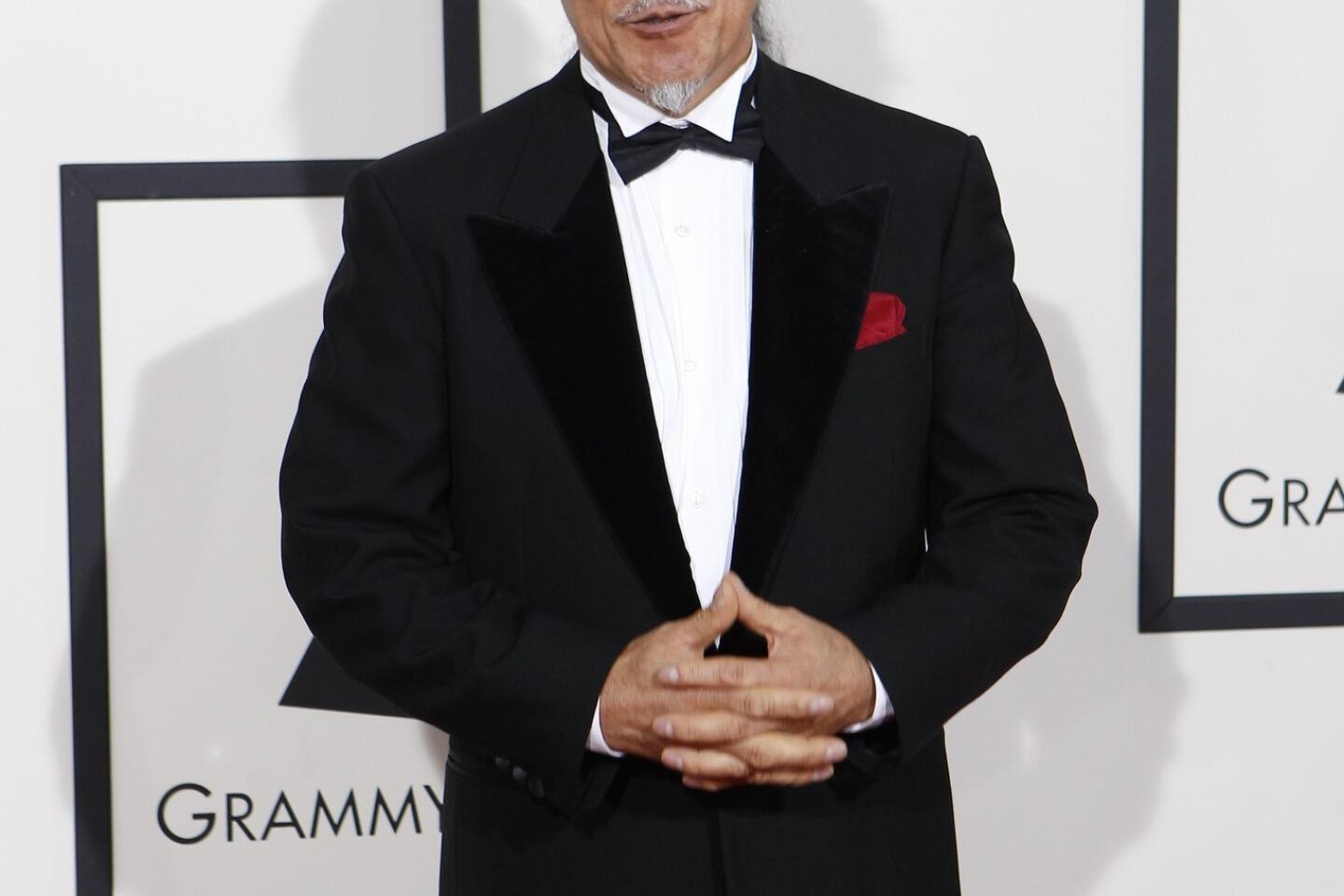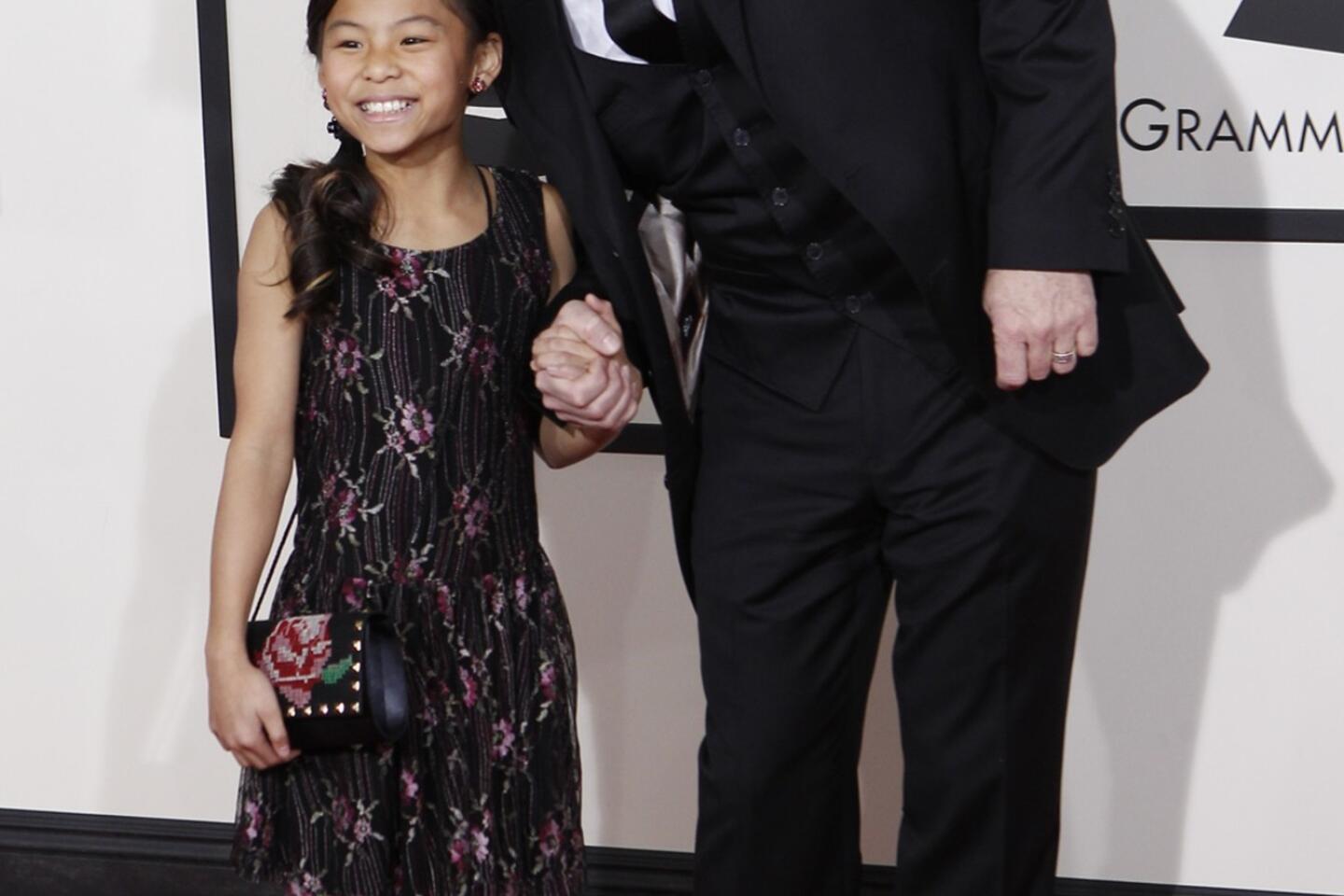L.A. darling, Grammy nominee La Santa Cecilia basks in crossover glow
If the Latin alternative band La Santa Cecilia wins a Grammy Award on Sunday for its album âTreinta DĂas,â it will have a long list of shout-outs to bestow.
To the merchants of Olvera Street, who remember when the bandâs lusty-voiced lead vocalist, Marisol Hernandez, was a little girl crooning Spanish-language boleros for spare change.
To Los Prietos Boys Camp for young offenders, near Santa Barbara, where the band played a free gig earlier this month for the boisterous juvenile wards.
âTheyâre like, âIf you win, youâd better not forget us!ââ said Hernandez, a.k.a. La Marisoul, who sings like the love child of Janis Joplin and Celia Cruz and dresses in a style that might be described as Mesoamerican-Tropical Pop art (polka-dot blouses, lemon skirts, hand-painted shoes).
FULL COVERAGE: Grammy nominations 2014
Last year, as La Santa Ceciliaâs identity evolved from L.A. hometown sweethearts into the musical face of the countryâs fast-growing under-35 Latino population, the band found new friends across the country. Band members also turned into melodic cultural emissaries in the debate over immigration reform, performing at rallies nationwide.
The kitchen crew at Patâs restaurant in Philadelphia showered the group with free cheese steaks in gratitude for its hit single âEl Hielo (ICE).â The song, despite its chilled-out bossa nova tempo, is a fiery cri de coeur about three immigrant workers living in a fearful twilight zone of the American dream.
La Santa Cecilia fans know that one worker is modeled on La Marisoulâs mother, and that the bandâs accordion player Jose âPepeâ Carlos was 6 when his Oaxacan parents crossed the border illegally. Heâs been fighting for U.S. citizenship ever since.
âThis year, weâve been able to go to places like Charlotte, N.C., Washington, D.C., Chicago, throughout Texas, and everywhere we go the people that come out are people like Pepe that are going through all that same stuff,â said percussionist Miguel Ramirez.
But whether it takes home the trophy in the Grammysâ nebulously designated Latin rock, urban or alternative album category, La Santa Cecilia â a local favorite since it began playing to wall-to-wall dance crowds at La Cita and the Echoplex in the mid-2000s â already has savored the kind of breakout year that can turn an emerging act into a headliner.
TIMELINE: Grammy Awards through the years
Mainstream culture certified La Santa Cecilia when the trade publication Advertising Age last year named it one of the âRising Hispanic Artists to Watch,â citing the bandâs âcrossover appealâ from the Spanish-dominant to the English-speaking general market and the great in-between.
Although the band, which also includes Nicaraguan bassist Alex Bendaña, sings mostly in Spanish, its sensibility is as casually multicultural as the signage at an L.A. mini-mall.
âThey definitely became sort of like the voice of immigrants,â said Mariluz Gonzalez, a promoter and manager who co-hosts the Latin alternative radio show âTravel Tips for Aztlanâ on KPFK-FM (90.7). âIt just came at a great time and it resonated with a lot of people. It got them out of L.A. and kind of made them into a band that has national appeal.â
One recent afternoon, the band gathered at the San Fernando Valley studio-home of producer Sebastian Krys, a native of Argentina who has worked with pop stars Shakira, Carlos Vives and Gloria Estefan. All the bandâs members, who are in their early 30s, still make their homes in L.A., where La Santa Cecilia formed years ago when La Marisoul and Carlos met while performing on Olvera Street.
PHOTOS: Grammy nominations snubs and surprises
The group, which is named for the patron saint of music, was offering a reporter a preview of its followup to âTreinta DĂas,â the bandâs major-label debut on Universal Latino. The new disc is due out this spring.
The untitled recordâs opening track, a cover of âStrawberry Fields Forever,â typifies La Santa Ceciliaâs canny musical ramblings. It commences with the celestial pluck of a jarocho diatonic harp, picks up speed with a vaguely samba beat, then adds a psychedelic norteño accordion line that in context is as weirdly groovy as John Lennonâs facial hair.
The rest of the album pivots from the flamenco-esque âLa Morenaâ (including samples of Olvera Street ambient crowd noise) to a jaunty â60s-retro pop tune (âSomeday Someday Newâ) and a smoky rendition of âCuidado.â
âOne of the first songs I heard as a kid,â La Marisoul said of the classic JosĂ© JosĂ© tune. âI remember riding on the 10, in my dadâs car, and him having tapes. And heâs like, âHija, escucha este.â One of those first songs that you get to bond with your parents with.â
BALLOT: Cast your Grammy Awards vote
Like a few other young bilingual Latino artists â the L.A.-based Guatemalan singer-songwriter Gaby Moreno and the Florida funk fusionists Elastic Bond come to mind â La Santa Cecilia is pointing U.S. pop not so much toward what F. Scott Fitzgerald called âthe orgiastic future,â but the orgiastic polyrhythmic here-and-now.
Krys compared the bandâs new album to an iPod shuffle. âThe biggest virtue of the band is also the hardest thing about the band to explain to people, is that they donât fit anywhere,â he said. What La Santa Ceciliaâs music embodies, Krys said, is ânot the L.A. people know, but the L.A. that people in L.A. know.â
One continuing challenge, Krys continued, is trying to explain that very L.A. sound to Latin American promoters and journalists who havenât seen the group perform.
Thatâs true of La Santa Ceciliaâs wardrobe as well. Both for political and cultural reasons, Chicano bands sometimes feel more compelled to assert their Latin identity than their cross-border counterparts. That can produce some comic paradoxes.
âWhen we went to Mexico this last time we were doing this interview, and they sat us down with this band from Mexico called Vicente Gallo, like an alternative indie group,â Ramirez said. âTheyâre dressed like kind of British indie-looking rockers, and weâre dressed like all super-folkloric.â
INTERACTIVE: Times music staff best of 2013 list
Produced by Krys, âTreinta DĂasâ was the first record to capture the bandâs complex musical identity, good-natured energy and technical chops. It reached No. 3 on iTunesâ Latin music rankings, on par with releases by Pitbull and Marc Anthony, and the Top 10 of Billboardâs Latin albums charts.
It also got a boost from Elvis Costello, who co-wrote one album track (âLosing Gameâ) on which he sang a duet with La Marisoul. She returned the favor, supplying a guest vocal on Costello and the Rootsâ album, âWise Up Ghost.â
âTreinta DĂasâ also established the group as a next-wave successor to quintessential L.A. outfits like Los Lobos, Quetzal and Ozomatli that pioneered cross-border fusions of rock, funk, punk, ska, cumbia, son jarocho, norteño and more. La Santa Cecilia toured last year with Los Lobos, which was celebrating its 40th anniversary, and closed out one show with a group encore of âLa Bamba,â forming a generational bridge stretching from Ritchie Valens onward.
Afterward, Los Lobos came to La Santa Ceciliaâs dressing room. Cesar Rosas kissed La Marisoulâs hand, and David Hidalgo told the younger group, âItâs your turn now.â
As is often the case in the catch-all Grammy category of urban-alternative-Latin, this yearâs competition is formidable, with entries from veteran Mexican rock bands El Tri and CafĂ© Tacuba; the Buenos Aires hip-hop and disco-funk duo Illya Kuryaki and the Valderramas; and Los Amigos Invisibles, the Caracas-by-way-of-New-York acid-jazz funksters.
But when the members of La Santa Cecilia turn up at Staples Center on Sunday, many of their Eastside musical elders will be unabashedly rooting for them.
âSome bands come out of a garage,â said Quetzal Flores, whose band Quetzal won last yearâs Latin alternative Grammy for its album âImaginaries.â La Santa Cecilia âcome out of a community that is a continuum of a long trajectory of art and culture and music.â
âSo no matter what happens, they go out there and struggle. But they can always come back and land on a soft pillow that is their community.â
[For the record 12:11 p.m. PST Jan. 25: An earlier version of this post identified bassist Alex Bendana as Salvadoran American. He is Nicaraguan.]
More to Read
The biggest entertainment stories
Get our big stories about Hollywood, film, television, music, arts, culture and more right in your inbox as soon as they publish.
You may occasionally receive promotional content from the Los Angeles Times.








